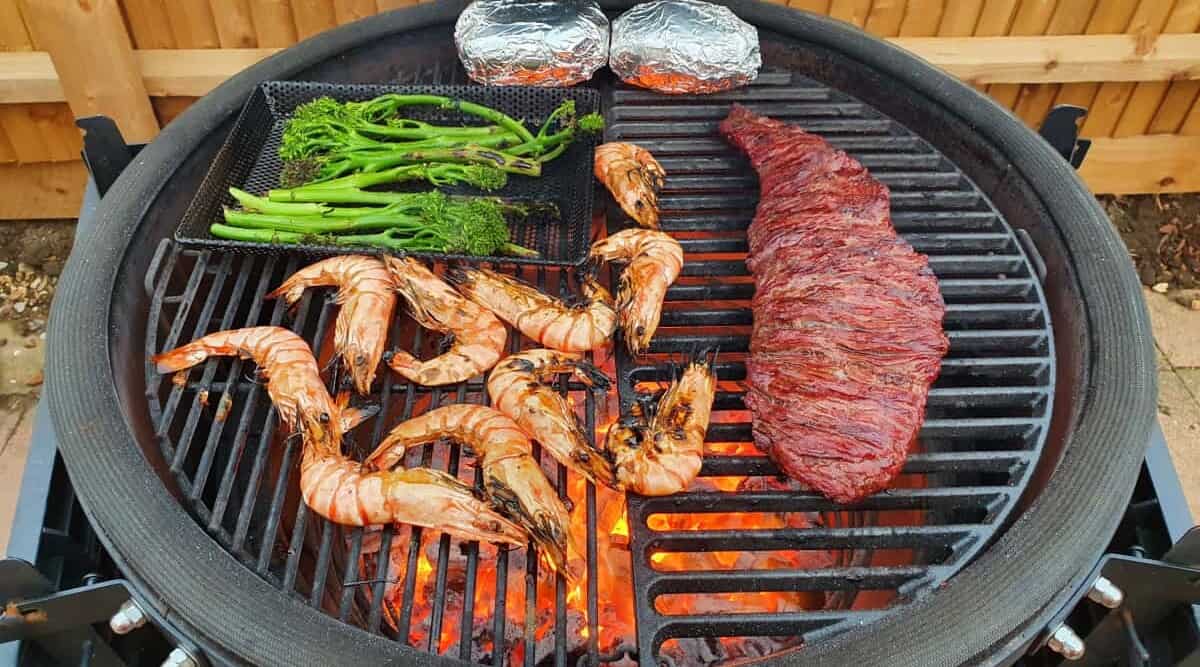
In this guide to the best kamado grills, we review the top models on the market, a handpicked selection of eight of the most popular, advanced and proven models for your consideration.
We’ll also talk about the pros and cons of cooking on a Kamado, what you can expect from the experience, and of course what to look for in such a quality grill, so by the end of the article you’ll know which is the best kamado grill for you.
No matter what your hobby or passion may be, there almost always comes a time when you want to take it to the next level.
The outdoorsy types get a longer trailer, photographers snag a bigger lens, model railroaders build a mountain. So what do grillers do?
Well, many head out to the store and pick up a big and shiny new outdoor kitchen. Others take up the fine art of making charcuterie. For some, however, the solution is to buy a Kamado grill.
If you’re considering making the jump and going Kamado, we’ve put together the following comprehensive buyers guide that you’ll definitely want to look over.
At a Glance: Our Top Picks for Best Kamado Grill
-
Best Overall:
Kamado Joe Big Joe III
The most innovative, forward thinking, fully featured Kamado Grill on the market today. Build quality is excellent, food produced is excellent. -
Runner-Up:
XLarge Big Green Egg
The most famous of all ceramic kamado smokers, Big Green Egg have 7 sizes of grill, and a whole host of available accessories, as well as a proven track record for quality. -
Premium Pick:
Komodo Kamado 23 Inch Ultimate Kamado Grill
The Komodo Kamado is quite simply the most well made and beautiful grill I have ever laid my eyes on. There’s premium grills…and then there’s this. It’s in a league of its own. -
Budget Pick:
Char-Griller Akorn Kamado
if cost is your most important determining factor, you could do worse than the Akorn Kamado. It’s a lot of grill for the money! -
Best Two-Zone:
Primo Oval Ceramic Grill
The only oval shaped grill on the market, Primo grills offer true two zone grilling due to their unique shape. -
Runner-Up Two-Zone:
Slow ‘N Sear Deluxe Kamado Charcoal Grill
The Slow n Sear made headlines as an upgrade accessory for Weber kettles. You can now have the same technology inside of a kamado grill. -
Best Portable:
Kamado Joe Junior
If looking for a portable Kamado grill, the Joe Junior is quite possibly the best, having the same build quality and lifetime warranty as it’s larger stablemates. -
Best All Metal:
Weber Summit Kamado S6 Charcoal Grilling Center
The Weber Summit is a double-walled, all metal Kamado that’s reminiscent of the original kettle charcoal grills, but so much more versatile. -
Best for Tailgating:
Broil King Keg 5000 Barbecue Grill
With the ability to attach to a trailer hitch, and made of metal so will break at all easily, this is easily the best kamado for tailgating. -
Most Unique:
Vision Grills Professional S-Series Ceramic Kamado
An electric starter in a Kamado grill? The only one on the market to offer this feature. -
Also Recommended:
Kamado Joe Classic Joe III 18-inch Charcoal Grill
The Kamado Joe Classic III used to be our number one pick, usurped only by its bigger brother. It’s definitely still a grill to be considered.
Note: Clicking the above links will take you to further information, current prices and customer reviews on Amazon, and other select retailers.
Jump to:
- 1 At a Glance: Our Top Picks for Best Kamado Grill
- 2 Recommended Kamado Grill Reviews
- 2.1 Kamado Joe Big Joe III
- 2.2 XLarge Big Green Egg
- 2.3 Komodo Kamado 23 Inch Ultimate Kamado Grill
- 2.4 Char-Griller Akorn Kamado
- 2.5 Primo Oval Ceramic Grill
- 2.6 Slow ‘N Sear Deluxe Kamado Charcoal Grill
- 2.7 Kamado Joe Junior
- 2.8 Weber Summit Kamado S6 Charcoal Grilling Center
- 2.9 Broil King Keg 5000 Barbecue Grill
- 2.10 Vision Grills Professional S-Series Ceramic Kamado
- 2.11 Kamado Joe Classic Joe III 18-inch Charcoal Grill
- 3 Buying Guide — Features to Look for in a Good Kamado Grill
- 4 What is a Kamado Grill? — The History of The Kamado
- 5 How Does a Kamado Grill Work?
- 6 What’s So Great About a Kamado?
- 7 Are There Any Drawbacks?
- 8 Conclusion
Recommended Kamado Grill Reviews
Now that we’ve taken care of the general overview let’s get down and dirty with a few choice grills in our best kamado grill review section.
Kamado Joe Big Joe III
Unlike many action movie series, the Big Joe just keeps getting better with every new iteration. Big Joe III continues the Kamado Joe tradition of grilling and smoking excellence while adding some incredible new features, making this our top-rated Kamado grill.
If you’ve read about the Kamado Joe Classic III, then you already know most of what there is to know about the Big Joe III. The only significant difference is in size – Big Joe III’s grate is 24” across, compared to Classic III’s 18-inch cooking surface.
The reason I recommend the bigger Big Joe, is after owning both sizes myself for a number of years, I’ve found the Big Joe is way better for creating two heat zones when grilling. And when smoking, due to the larger volume you need a slightly hotter fire, which helps with a cleaner combustion of wood and hence more blue smoke and less white. This results in better smoked food, and is worth paying the extra for.
The most obvious difference between Big Joe II and Big Joe III is the shape of the cooker. Joe III is taller than Joe II, with an elongated barrel shape. The extra cubic inches allow for more versatility inside, including expanding the Divide & Conquer Cooking System from two tiers to three.
Divide & Conquer is a rack and shelving system using half-moon-shaped grates and heat deflectors you can arrange as needed for a variety of cooking styles. Want direct heat searing and indirect roasting at the same time? Can do! It’s awesome for cooking a whole meal at once.
Another remarkable new feature on the Big Joe III is the SlōRoller Hyperbolic Smoke Chamber.
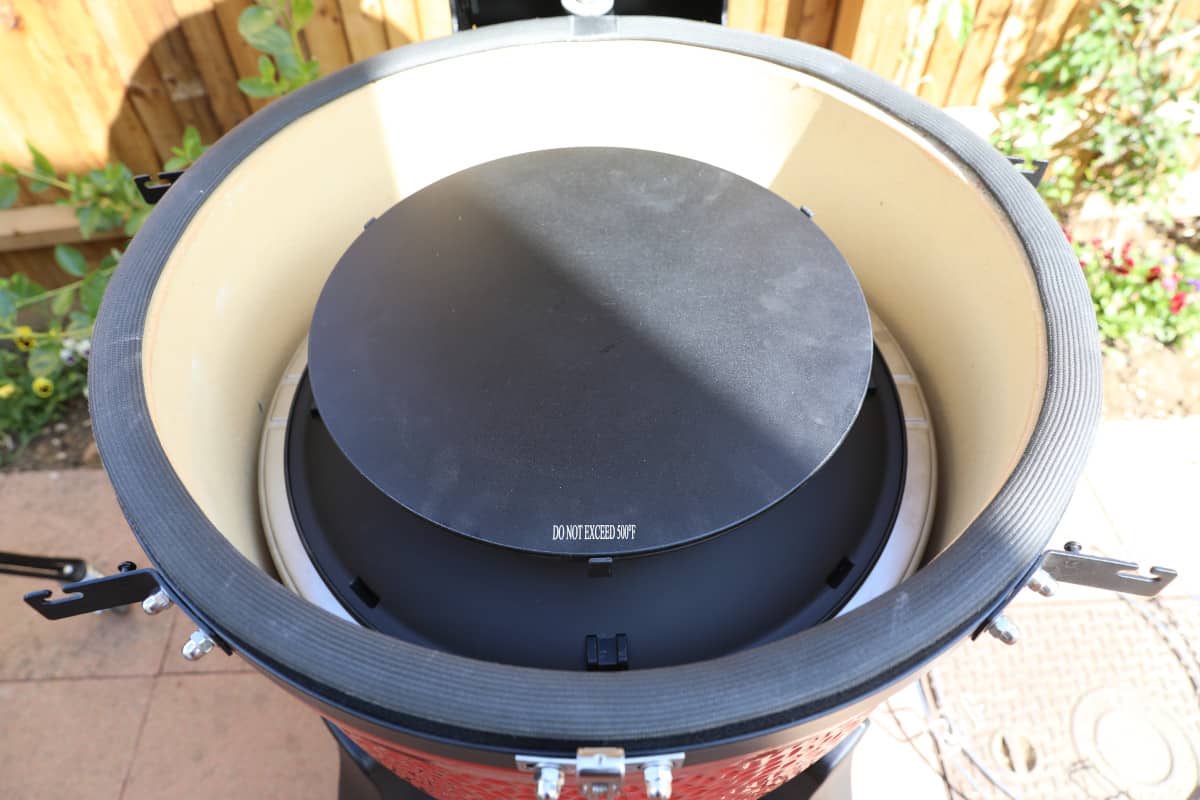
Looking a bit like a flying saucer, it’s actually a smoke flow optimizer scientifically designed to maximize smoke contact with your food. The unusual shape causes smoke passing through it to swirl just above the cooking grate instead of rising straight up. Anyone who loves smoke flavor will love this added bonus.
Other upgrades include a far more robust cart, with a storage shelf that perfectly accommodates the SlōRoller:
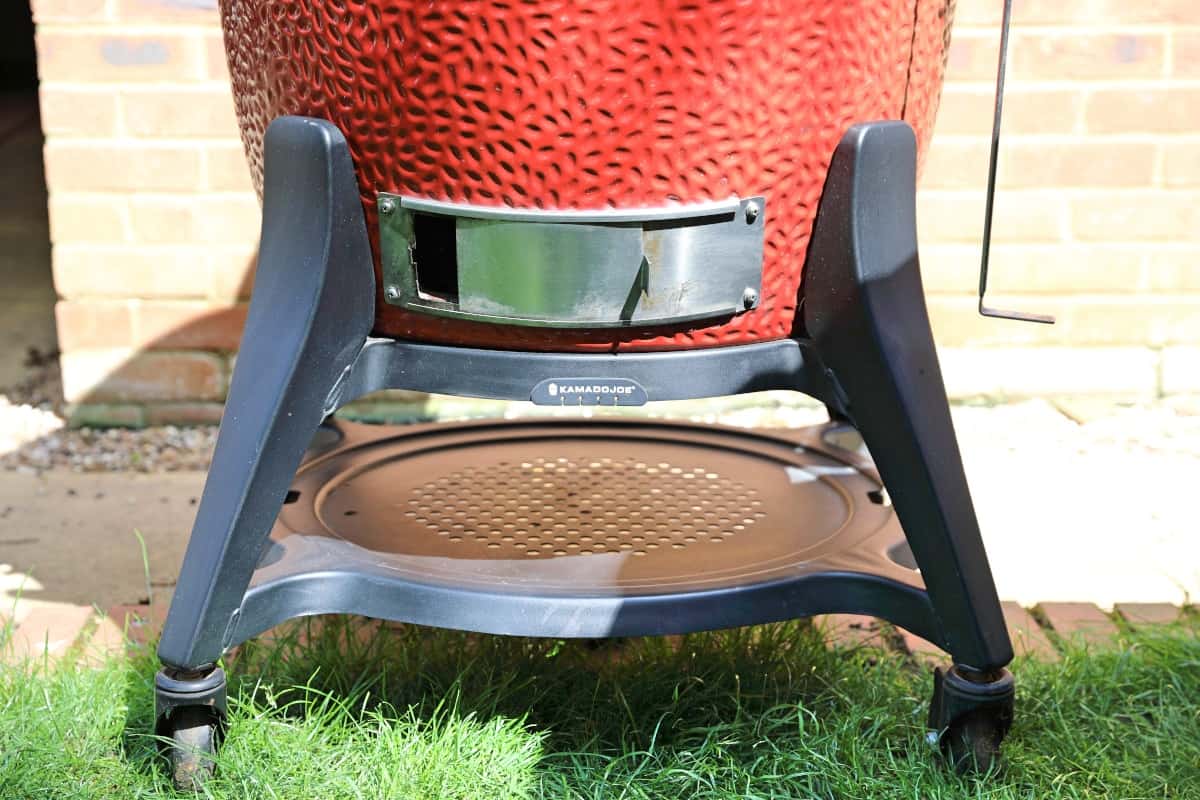
There’s also a stainless steel charcoal basket. This basket is a major improvement over the previous cast iron charcoal grate; it comes standard with a divider for splitting your charcoal into two zones, and it’s a breeze to lift out for easy clean-up and to reuse unspent charcoal.
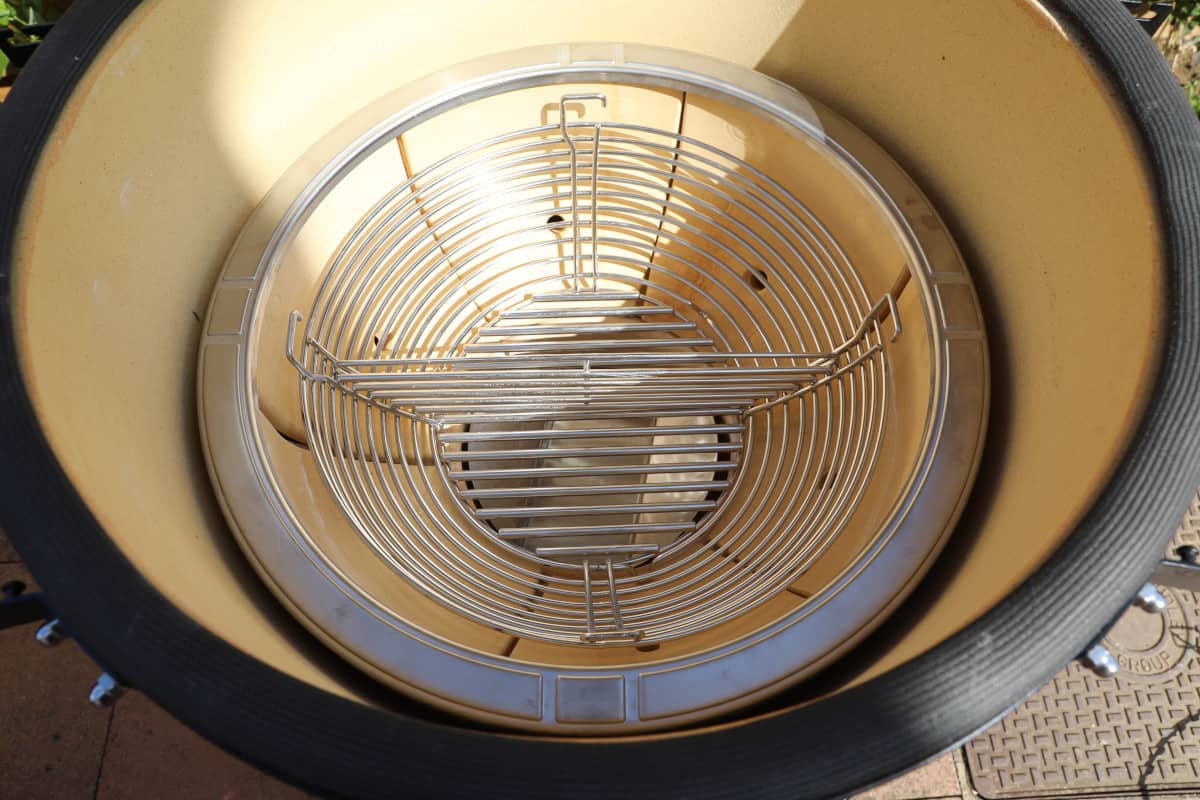
Returning features include the amazing Air Lift Hinge for one-finger opening and closing:
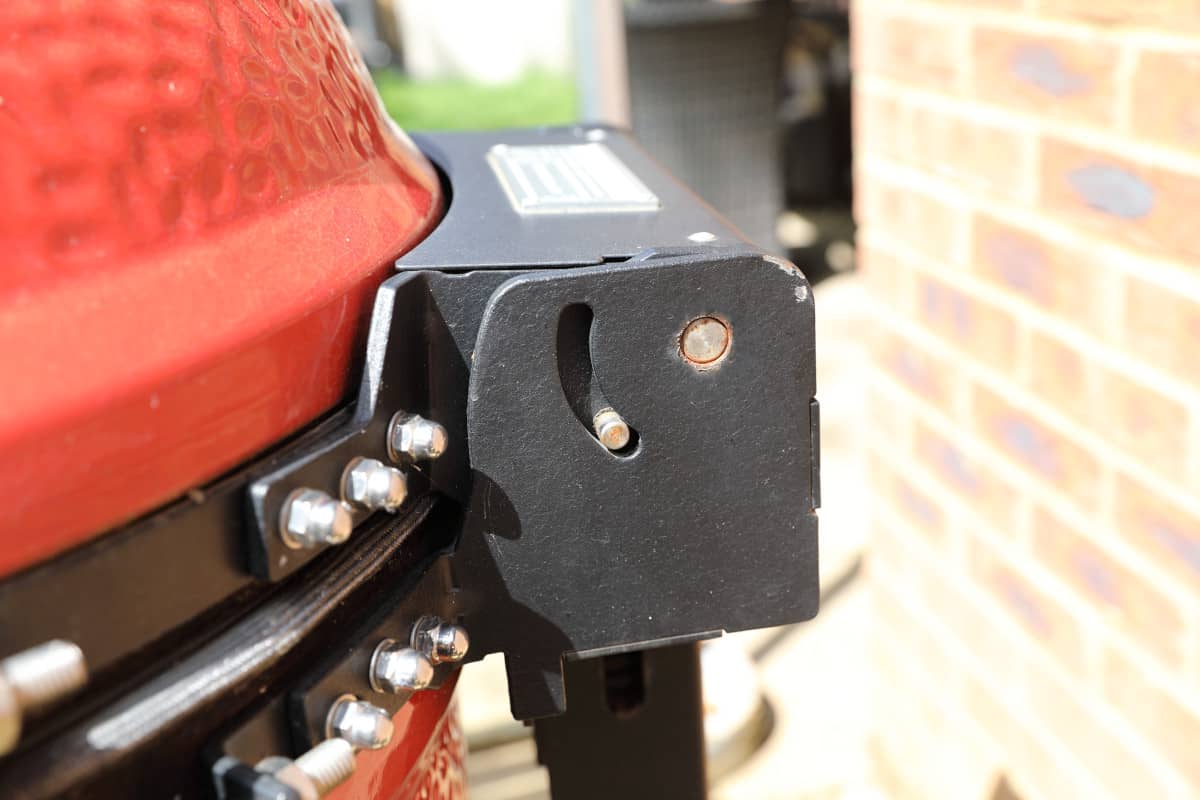
The multi-panel firebox, that prevents cracking due to expansion and contraction when expanding and cooling:
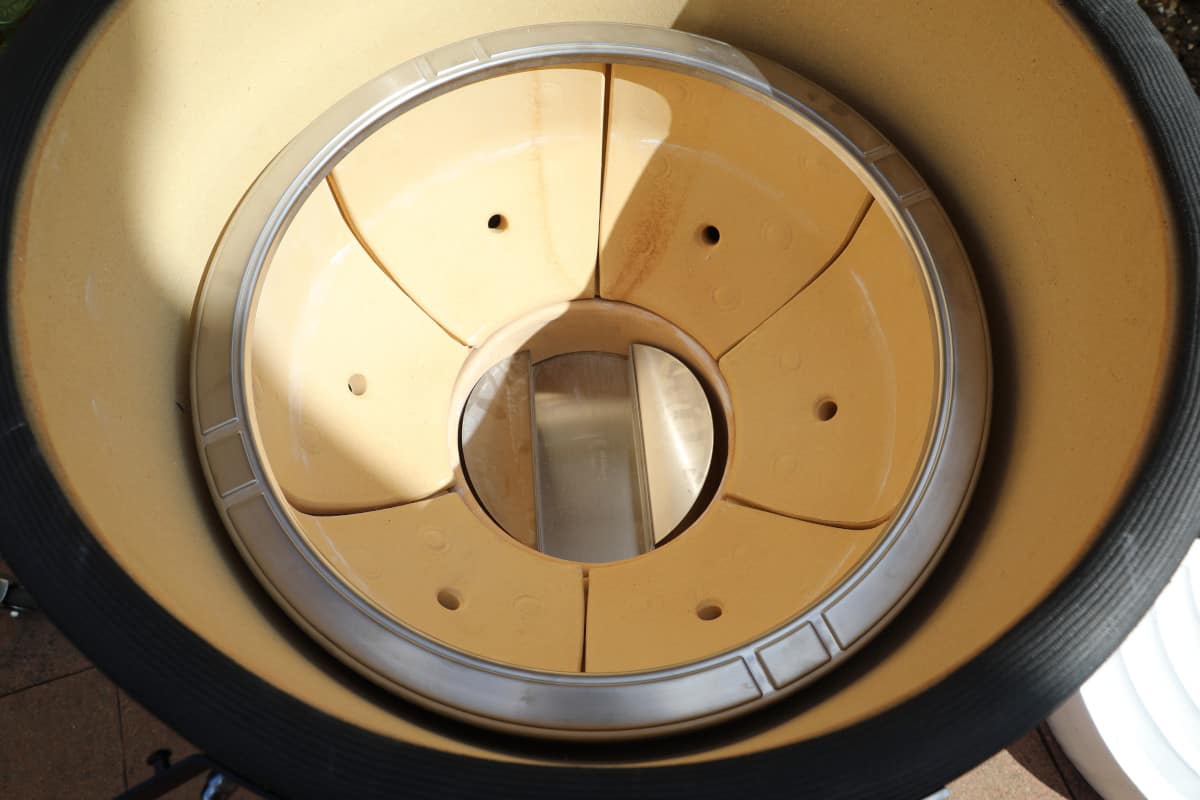
A sealing latch and long-life fiberglass gasket:
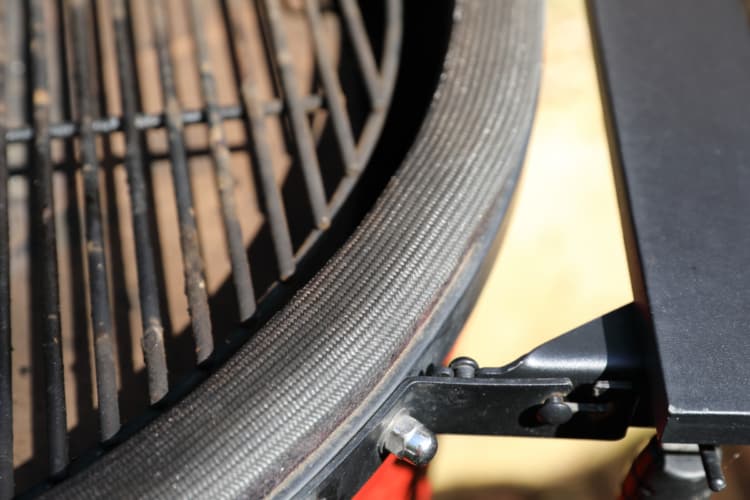
And finally a pair of folding aluminum side shelves, and the Kontrol Tower weather-resistant upper vent.
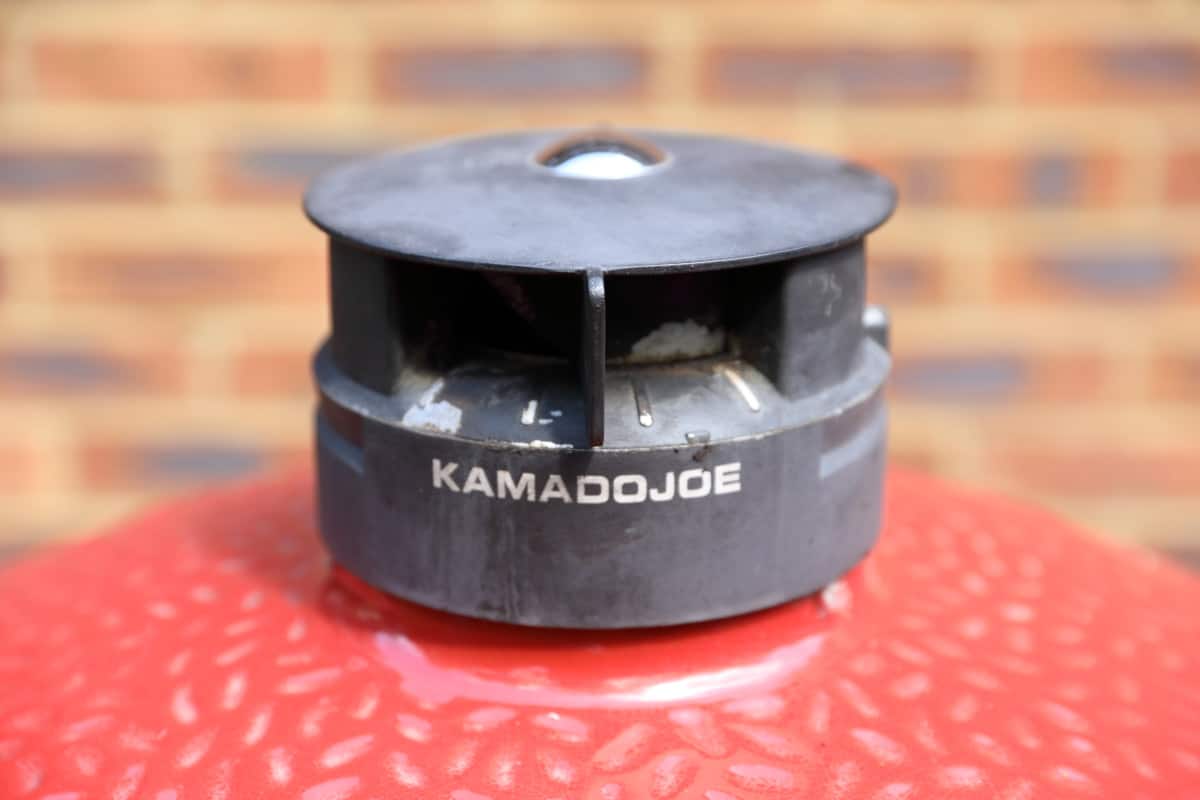
Looking at specs, the Big Joe III stands 53.47 inches tall on its cart, measures 58.4 inches across with the shelves out, and weighs a staggering 487 pounds.
The heat range runs from 225°F to 750°F but maxes out at 500°F with the SlōRoller in place, otherwise you can melt it. But you never smoke past this temperature anyway.
With the Divide & Conquer system in place, you have up to 864 square inches of cooking space available.
Pros
- The most innovative and feature packed Kamado on the market
- 3-tier Divide & Conquer system provides even more space and options for cooking
- The upgraded cart is far more robust and offers storage space missing from the previous version
- Included SlōRoller enhances smoking results
- Built like a tank for superb heat retention and performance
- Epic size makes you look like a backyard grilling boss
Cons
- Unbelievably heavy — you will not want to be moving this about often!
- Hefty price tag is as eye-catching as the glossy red ceramic exterior
You really can’t go wrong with any Kamado Joe grill. But, for the Big Joe III, KJ pulled together a seemingly unbeatable combination of classic and brand-new features.
While it’s best suited to people serious about smoking, it’s also ideal for those who want to go beyond basic barbecuing. Oh, and it’s definitely for people who love to cook a LOT of food. And if you want to own the most impressive-looking grill in your circle of friends, the Kamado Joe Big Joe III is likely a winning choice.
For further details and to see many of the foods I have cooked on this beast, please see our Kamado Joe Big Joe III review.
XLarge Big Green Egg
Diving into unknown waters can be unnerving, whether we’re talking about trying something new, or literally plunging into foreign H2O.
While I don’t recommend the latter, new things can be great. But, when you really don’t know the territory it can be hard to make a choice. Sometimes the best bet is to go with the most popular and well-known option; surely, if so many people are talking about it, it’s gotta be half-decent, right?
You can’t Google “Kamado grills” without seeing a bunch of hits for the Big Green Egg. It really is the progenitor of the modern Kamado in the Western world. It even has its own special adherents: “eggheads,” the original fanboys of the Kamado niche.
Unlike many brands that are popular due to clever marketing, but that are actually inferior products, the Big Green Egg is a quality product.
The ceramic is top-of-the-line, and both the top and bottom vents are carefully crafted for precision control of temps. The stainless steel grid should stay fresh with minimal care, and the porcelain exterior will remain shiny and green for years.
Green Eggs come in quite a basic setup, but there is a whole slew of upgrades and ‘eggcessories‘ you can purchase to bring it up to the standard of any rival product.
The BGE is available in seven different sizes: Mini, MiniMax, Small, Medium, Large, XLarge, and XXLarge.
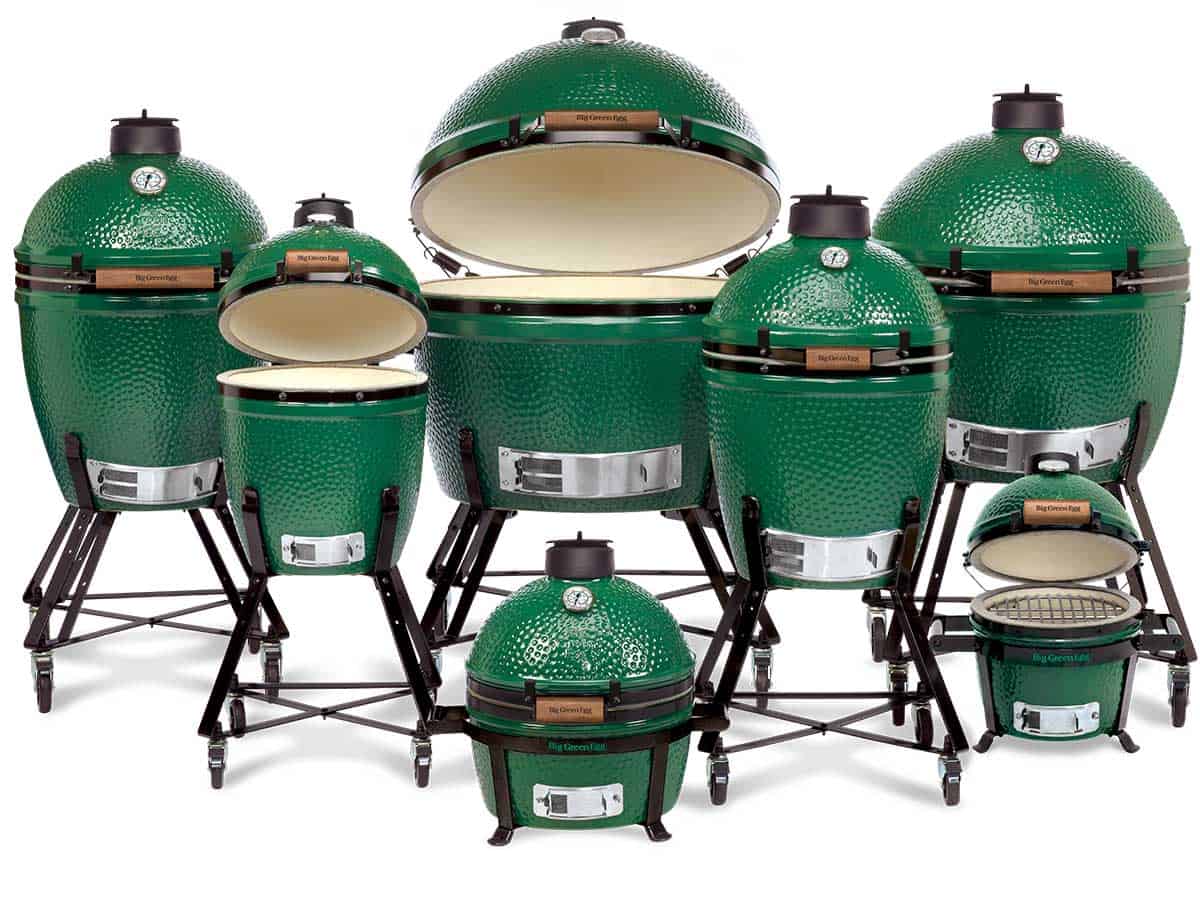
Here is a quick run down of the dimensions:
- Mini — 10” grid; 79 sq. In. Cooking area; 39 lbs.
- MiniMax — 13” grid; 133 sq. In. Cooking area; 76 lbs.
- Small — 13” grid; 133 sq. In. Cooking area; 80 lbs.
- Medium — 15” grid; 177 sq. In. Cooking area; 114 lbs.
- Large — 18.25” grid; 262 sq. In. Cooking area; 162 lbs.
- XLarge — 24” grid; 452 sq. In. Cooking area; 219 lbs.
- XXLarge — 29” grid; 672 sq. In. Cooking area; 424 lbs.
If you can’t find a size to suit your needs, well, your needs are pretty darn unique!
The XXLarge is perfect for any human octopus that wants to cook 35-40 burgers at once. Actually, the commercial applications are obvious with this bad boy, which can purportedly handle 14-16 whole chickens, 18-20 steaks, 20 racks of ribs, or one entire suckling pig.
For most of us, however, the XLarge may be the best choice for the typical, have-the-fam-over cookout. Check out this promotional video from Big Green Egg themselves, that goes over the features and specs of their XLarge offering:
My biggest complaint about the Egg is that when you buy one, that’s exactly what you get — one Big Green Egg. Carts, stacked grills, side tables, deflectors and other great accessories are all sold separately. That’s disappointing, considering they are included with many other Kamados.
I have seen several reports around the forums of people experiencing gasket breakdown on their BGE, but it is the most consumable part of any Kamado. Replacing the gasket is not difficult, and proper care (as in buying a cover) should extend the life and good looks of the entire unit.
Pros
- Best-known name in the industry
- Very well-made
- 7 sizes to choose from
- Lots of accessories available
- Active community online
Cons
- Comes with minimal accessories
- Not much innovation over recent years
- Anecdotally inferior fittings
- Multi-zone cooking nearly impossible
- Pushes the affordability envelope
The Big Green Egg may have brought Kamado to the mainstream by being the first practical unit to market, but it has stayed there because it’s a quality product.
Komodo Kamado 23 Inch Ultimate Kamado Grill
Now, if money isn’t an issue for you, if you just love grilling so much you’re willing to drop top dollar on a show-stopping Kamado, if you’d love to own the most amazing looking and brilliantly engineered product on the market, then the Komodo Kamado is for you.
And it’s incredible to look at! Who wouldn’t want this piece of art in their yard?
So yes, it’s likely the very best kamado grill in the world when it comes to engineering, build quality, functionality, good looks and wow factor.
The Komodo is the brainchild of Dennis Linkletter, grandson of TV personality Art Linkletter, who took over a small Kamado manufacturing company in Indonesia. His redesigned grills incorporate innovative function and breathtaking appearance.
The 23” Ultimate is the original Kamado, but it has been steadily improved since its debut 19-years ago, and they now have six different sizes, from a 16” table-top, all the way up to a 42” beast. The Ultimate is the size that should suit most people.
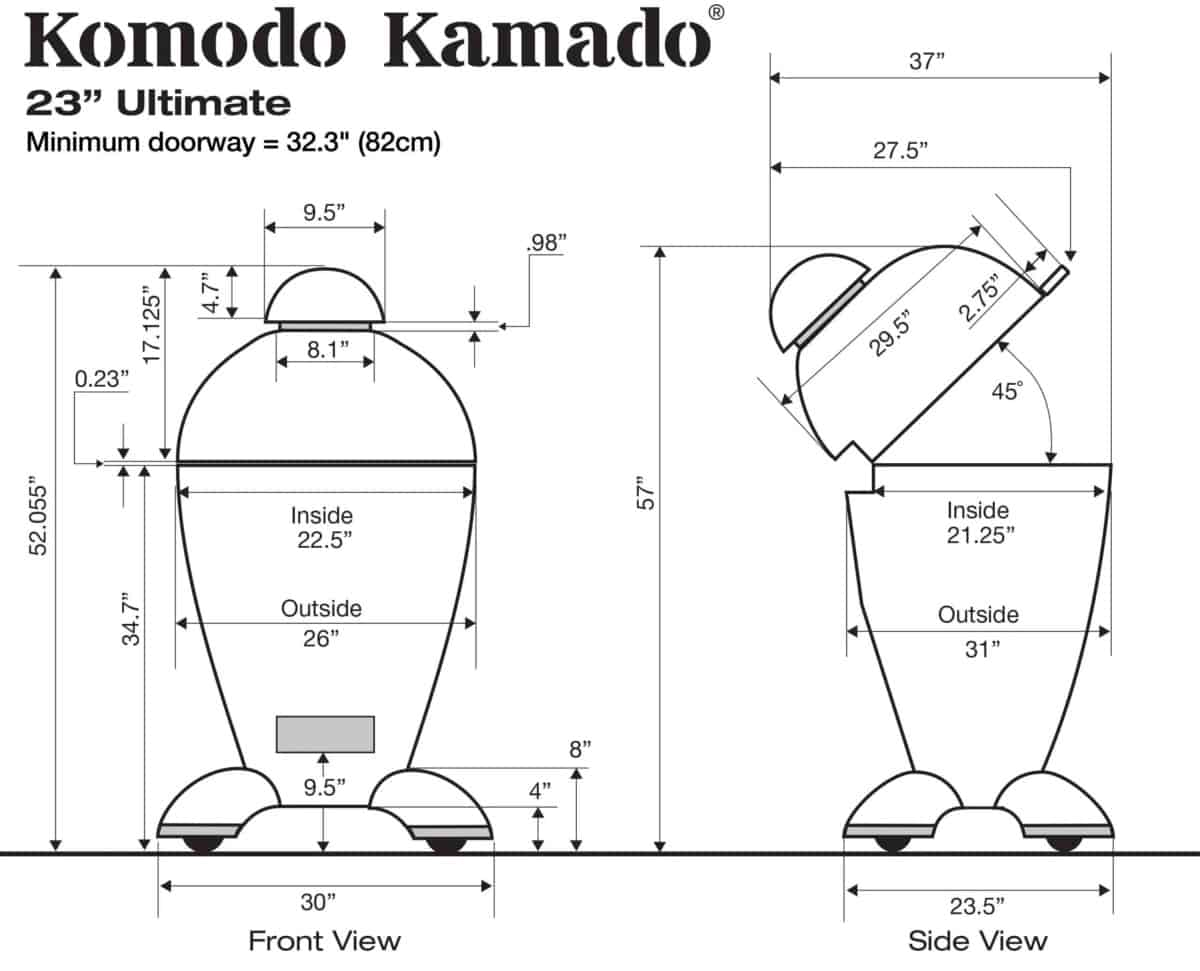
There are now also 40 color variations shown on the website, made possible by the tiles applied to the outside with space-grade adhesive.
Inside the 23” Ultimate, you’ll find 375 sq. In. Of main grill, 274 sq. In. Of upper grill, and 329 sq. In. Of lower grill. That’s nearly 1000 sq. In. Of cooking surface.
Lifting this beautiful monster is a team effort. By that, I mean an American football team because the total weight is 588 lbs.
All three supplied cooking grills are 3/8″ / 9 mm 304 stainless steel — and they can be used in 4 cooking positions! The charcoal basket is also 1/4″ / 6.35 mm 304 stainless, the heat shield/ash screen is 3 mm 304 stainless, and many of the fittings and fixtures are also 304 stainless. All this quality material adds to the weight considerably.
And the body itself is a multi-layered, incredibly insulated grill, with the lid alone weighing 120 lbs.!
Fortunately, Komodo kamado designed a ‘self-opening’ hinge for the lid, that once you flip the latch, simply opens all on its own. And it’s easy to close. So don’t be put off by the weight, it couldn’t be easier to operate, regardless of your size and strength.
Every indication is that this is an incredibly well-engineered grill that uses only the best materials. And due to the quality of said materials and its extreme insulation, a 16 lb. Bag of charcoal will burn for 85 hours at 235F. So by way of the best in class fuel efficiency, you will save money every time you use this grill compared to other brands.
By the way, I have to mention that the 42” version called the Serious Big Bad weighs an estimated 1500 lbs. And costs over $9,000! Good thing there’s a monthly payment plan, so it could still be yours — And if you do buy one, please send me a picture.
Pros
- Incredible engineering, build quality and materials used
- Comes standard with three cooking grates, charcoal basket, drip pan, heat deflector, and side accessory plates, all in very thick 304 stainless steel.
- Rotisserie shaft system makes it rotisserie ready.
- ‘Temp controller’ (BBQ guru/Roks Stokker) ready, via the supplied face plate
- Optional gas door assembly at the rear
- Food grade silicone seals
- Easy to open and close with a self-opening hinge and lid that takes the weight
- An amazing array of colors to choose from
- Will quite simply amaze your friends
Cons
- Very expensive
- Ridiculously heavy — which is actually a good thing, when you know why ?
Who is this grill good for?
Anyone with extra money to burn, or the desire to fulfill the dream of owning the ultimate grill, will love this truly unique Kamado.
They are available from online retailers, but I’d stick with the manufacturer’s website if I were placing an order due to the special shipping requirements.
Char-Griller Akorn Kamado
It’s a little odd that Char-Griller calls this the “Akorn” when it looks more like an egg than any of the Big Green Egg products. But, considering the remarkable value packed into it, we won’t quibble over a name.
True to form, Char-Griller has created a kamado grill for those who can’t or don’t wish to shell out big bucks for one of the big names. In a nutshell (an Akorn shell, to be precise), they’ve taken all they know about charcoal grilling and smoking and applied it to a kamado.
At only 97 pounds, the Akorn is much lighter than most kamado grills. That’s due to its construction – Char-Griller built it out of steel rather than ceramic to keep costs down. Though steel is not nearly as efficient at heat retention as ceramic, the triple 22-gauge walls go a long way toward bridging this gap. Expect to achieve temperatures between 200°F to 700°F.
The 20-inch diameter, 314-square-inch main cooking grate is made of heavy-duty cast iron for excellent durability and even heat distribution. A clever pop-out section in the middle allows you to drop in more wood or charcoal with minimal disturbance to your cooking session.
Add on the removal warming rack, a familiar feature for charcoal grill users, and you gain an extra 133 square inches of space. This is nice for smoking, toasting buns, or keeping cooked food warm.
Like many traditional grills, the Akorn features an integrated cart with wheels – two free-spinning and one locking caster. There’s a storage shelf, too, which is handy for stashing accessories, a bag of charcoal, or wood chunks. You’ll likely take full advantage of the twin side shelves, as well, with six accessory hooks total.
Clean-up is made easy, thanks to the Easy Dump Ash Pan. Rather than the usual slide-out tray we’re used to seeing, the entire bottom of the Akorn comes off, so no ash gets left behind.
Out of the box, the Char-Griller Akorn lacks a heat deflector. You’ll likely want to add one (they call it the Smokin’ Stone) to your purchase since it’s pretty much a necessity for smoking.
Pros
- Triple steel walls keep weight down while boosting heat retention
- Loaded with convenience features
- Yard-friendly size
- High-quality cast iron cooking grate
- Affordably priced
Cons
- Heat deflector for smoking is not included
- Fixed-height cooking grate limits versatility and capacity
Anyone thinking about dipping their toes in the kamado waters but not looking to take a big financial plunge would do well to check this cooker out. It’s a great bridge from regular charcoal grilling to kamado cooking, offering many of the benefits of both on a budget.
Primo Oval Ceramic Grill
Anyone who is accustomed to a wide grill, such as a gas BBQ, might be a little hesitant to start cooking in the round shape of typical Kamado grills.
Grill size may be limited, different heat zones difficult to achieve, and large cuts hard to accommodate. If these thoughts have been on your mind, the Primo Oval offers a solution.
As the name implies, this Kamado is oval shape rather than circular.
The extra width is great for accommodating a rack of ribs, and you can divvy up the charcoal in the firebox to create two distinct heat zones — high direct heat above the coals on one side, and indirect heat on the other — perfect for searing and then cooking indirect until done.
An American-made grill, the Primo Oval is a ceramic monster that weighs 250 pounds. However, you do get a cast-iron top vent and 300 square inches of cooking area included in that weight. Thinking 300 isn’t enough? No problem! The grill can be expanded with a rack system to 495 sq. In.
If you want to go bigger, Primo also offers a 400 square inch Oval XL, available in two versions, including a Jack Daniel’s special edition that would look great in the backyard. There’s also a smaller 210 square incher, and a traditional 18.5” round ceramic grill.
The reversible grills should have a long life expectancy, and the spring-loaded hinge makes lifting the hefty lid a simpler chore than it might otherwise be. Their website offers some great tips on Kamado cooking for the neophytes, and if you really love the grill you can order Primo-branded gear to wear while you cook.
Although this has every appearance of being a high-quality Kamado, it unfortunately doesn’t come standard with many of the cool accessories available for it. Actually, it doesn’t come with anything, unless you buy the “All-in-One” package, which comes with a cart and cradle, fold-down side tables, an ash tool, and a grate lifter.
That expandable grill? Sold separately. Ditto the firebox divider. If you prefer to buy à la carte, then this won’t be a big deal, but it’s important to compare apples to apples if you are price shopping.
Pros
- Heavy-duty ceramic
- Oval grill provides extra room for cooking, plus true two zone cooking (hard to achieve in the more rounded Kamados.)
- Dual-sided grills for increased life-span
- Dividable firebox
Cons
- Leans towards the expensive side
- Really heavy
- Basic accessories not included, except in upgrade package
The Primo Oval LG 300 is a very good grill that should meet the needs of most outdoor chefs. I’d especially recommend it to people who love to cook ribs, and other huge cuts of meat.
If flashy colors aren’t your thing, then you’ll also appreciate the subtle black enamel finish.
Slow ‘N Sear Deluxe Kamado Charcoal Grill
It’s always intriguing when a barbecue offers a different experience or provides cooking options beyond the norm. The unique design of the Slow ‘N Sear Kamado does both, thanks to a nifty accessory that comes with it.
In fact, we’ve reviewed this accessory on its own as an add-on for kettle grills. By adding it to a kamado, the manufacturer, SNS Grills, has seriously ramped up the versatility of what might otherwise have been “just” another premium kamado grill.
For those unfamiliar with it, the Slow ‘N Sear is a combination charcoal basket and water pan. It’s semi-circular in shape, and the water pan is a wedge that stands vertically in the basket. The water not only creates a heat barrier but also evaporates as you cook, adding moisture to your food and helping smoke particles adhere better to your food.
By adding this feature to a kamado, SNS Grills has created dedicated multi-zone cooking – one direct and two indirect. The basket elevates the charcoal to a position just below one side of the main cooking surface, a 22-inch stainless steel grate that rotates 360 degrees for easy access to your food.
Directly over the charcoal, you can grill as you would on a traditional barbecue, using screaming-hot temperatures over 1000°F to sear your food. The other side of the grate is over empty space, allowing for indirect, radiant-heat cooking. Additionally, you can place food on a lower grate beside the basket/reservoir unit on the included Drip ‘N Griddle Pan accessory.
For even more cooking space, you can stack a half-moon-shaped grate over either the direct or indirect heat side of the main grate. Want more? Move the griddle to the top rack for pancakes, eggs, bacon, and other non-grate-friendly foods.
SNS Grills claims their system, when used in a kamado, allows the fire to burn hotter and cleaner than in a traditional kamado. This creates more smoke, and it’s cleaner and, therefore, better-tasting, too.
You also have the option to leave the Slow ‘N Sear accessory out and pile charcoal in the bottom of the fire bowl over the top of a cast iron grate, just as you would in a typical kamado. Insert the included heat deflector plate, add the cooking grate, and get ready to smoke something delicious.
The SNS Grills Slow ‘N Sear Deluxe Kamado stands 48 inches tall on its stainless steel rolling cart and weighs a substantial 231 pounds. A pair of folding side shelves provide ample prep space, and an ash tool is another thoughtful inclusion.
Pros
- Choose from traditional kamado or Slow ‘N Sear-style cooking for extra versatility
- Dedicated multi-zone cooking with Slow ‘N Sear insert
- Heavy-duty ceramic and stainless steel construction
- True direct heat searing, something not always possible on kamado grills
- Numerous accessories included in the box
Cons
- No storage on the cart
- Hotter fire likely to use up charcoal more quickly
Thanks to a “don’t fix it if ain’t broken” approach to kamado design and a remarkable accessory insert, the SNS Slow ‘N Sear covers all your smoking and grilling needs.
Kamado Joe Junior
A lot of us regular guys and girls are not fortunate enough to be able to step out the back door and into an epic oasis of the type featured in barbecue advertisements.
Given the typical tight confines of a standard backyard, it may be necessary to scale back one’s outdoor kitchen dreams. For example, many people just don’t have room for a large smoker and grill.
Enter the Kamado Joe Junior.
Like the rest of the Kamado Joe range, the Joe Junior is made of thick, heat-resistant ceramic with an enamel coating. There is nothing unique about its construction or the way it cooks, by and large. It’s simply a scaled-down version of its bigger brothers, the Classic and Big Joe.
Unlike its larger cousins, it does not have a multi-level grill system. Its size simply does not allow for this, so it’s a single-level grate only. This keeps the cooking surface area down to just 13.5”, diameter, 375.92 sq. Cm. / 58.3 sq. In.
This is enough to cook a full meal for two people or snacks such as hotdogs and burgers for 4 or 5 people.
The Joe Junior comes with a stainless steel grate, ceramic heat deflector, a fire ring, a firebox, cast-iron wire frame, top vent, and built-in lid thermometer as standard.
Its superior build quality, using the same materials as the larger Kamado Joes, separates the Kamado Joe Junior from the rest of the small grill pack.
It may be somewhat expensive considering its size, but it’s a powerful and dependable cooker that can smoke, roast, bake, grill, and sear with aplomb.
Pros
- A top-of-the-range portable smoker that’s as capable as larger models.
- Versatility to smoke, grill, sear, roast, and bake
- Premium build-quality, so will last a long time
- Well insulated, so will hold a steady temperature for consistent results
- Fuel efficient for reduced running costs
- Easy to clean by simply brushing ashes out of the lower vent
- Cast-iron stand keeps it off the gorund for safe use, and two built-in handles makes it easy to carry between two people
- There is a lifetime warranty on the ceramics
Cons
- It’s expensive considering its size, but you are paying for higher quality!
- It’s heavy for a small portable grill
- There’s no slide-out ash drawer included, something the larger models have
If you don’t have room for a larger model or only wish to cook for 2 or 3 people regularly, then the joe Junior is a respectable entry into the Kamado world and will produce wonderful food for many years.
To learn more about this grill, and to see some foods I’ve cooked on mine, please see my Kamado Joe Junior testing and review article.
Weber Summit Kamado S6 Charcoal Grilling Center
The biggest deterrent for many grillers about charcoal is the somewhat laborious process of lighting the coals. Although a chimney starter is a great device for speeding up the process, there are still those resistant to giving up the push-button convenience of a gas barbecue.
Weber knows you love to grill, and they know you crave convenience, too. So, when they at long last entered the Kamado arena (just recently, in fact) they included a gas-fired igniter. A press of a button sparks the propane-powered igniter to life, and your charcoal should be roaring in minutes without fussing with an electric lighter, chimney, or starter cubes.
Interestingly, Weber prefer to see this as a multi-function charcoal grill and Kamado, and a natural evolution of their famous kettles. Indeed, it looks more like a traditional charcoal barbecue compared to other ceramic grills. But it iss feature packed!
With a 24” diameter grill, there is plenty of available surface area for cooking, 452 sq. In., to be precise. Due to the large capacity and high-end build quality, the Summit weighs in at 238 pounds, but this is including the cart and everything.
Anyhow, this isn’t your traditional Kamado. It’s made of porcelain-enameled steel, without a trace of ceramic, a finish that all but guarantees durability. In fact, the dual-wall kettle is air insulated, making it surprisingly lightweight for its size, and yet an efficient holder of heat. Other parts are made of either stainless steel or aluminum.
There are many commendable features to be found on the Summit.
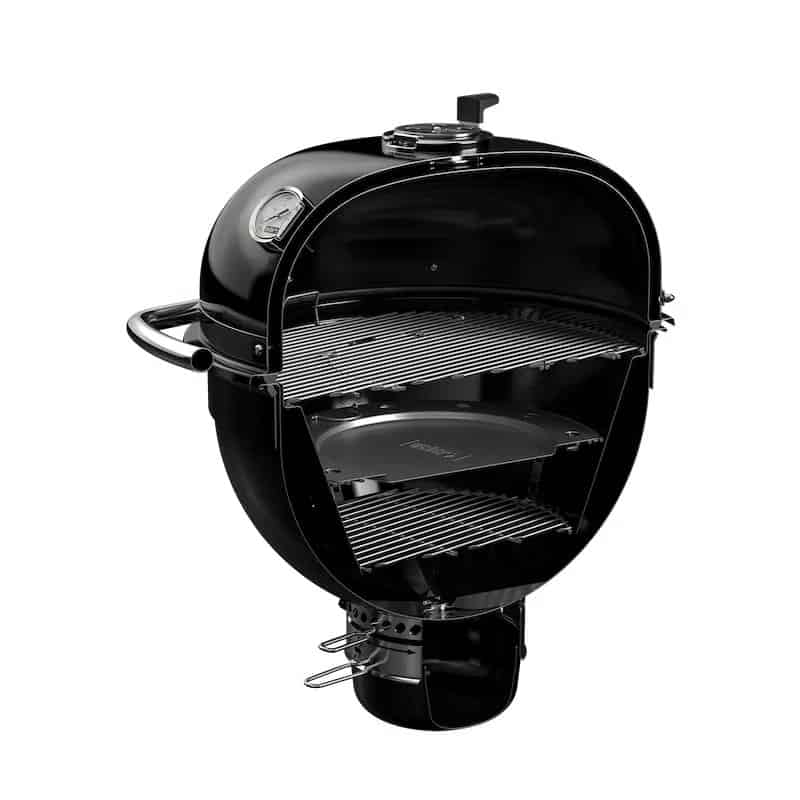
The ash drawer is a nice, mess-resistant touch. The fuel grate can be raised and lowered put higher temperature searing, or for low heat smoking. There is a stainless steel diffuser plate insert, used to eleiminate hot spots, spread smoke evenly, and eliminate radiant heat to help maintain consistent low temperatures for smoking.
Finally for the main grill, there is your traditional one-touch cleaning system and lower vent as seen on Weber charcoal grills, as well as a single ‘Rapidfire lid damper’ at the top of the dome, which can be fully opened to quickly boost air flow and heat, or choked right down using a daisy wheel for low and slow.
Now a few words on the cart.
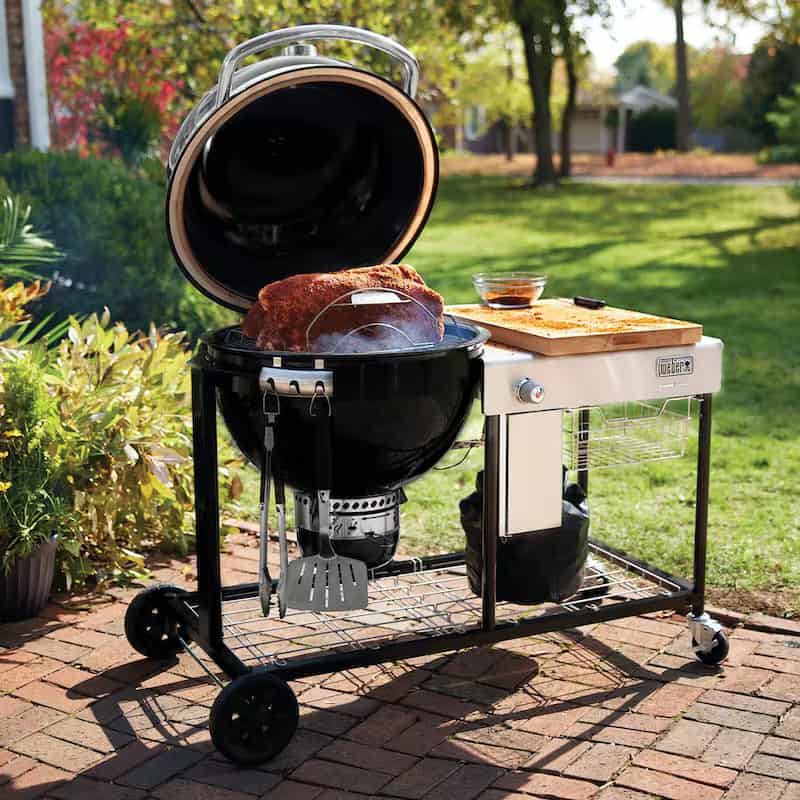
It has two large rolling wheels, and two locking casters, so is easy to move around but can be fixed in place.
It has a usable lower shelf where you can store charcoal for example. It has 3 tool hooks for hanging your BBQ tools, a side table to use for food prep, and a basket to hold rubs and sauces. It’s a highly practical, useful workstation.
The cart is also home to the Snap-Jet gas ignition system, using a small disposable gas canister to initially light your charcoal and you have you ready to cook in as little as 15 minutes. This feature is not available on the Weber Kamado without cart.
Pros
- Trusted name in charcoal grills
- Lightweight
- Easy to light
- Large cooking area
- Removable ash catcher
- Diffuser plate
- Heavy-duty hinge
Cons
- Weber is new to Kamado style grills; quality is unproven
- Current Kamado users may need an adjustment period to learn dampers
- Moderately pricey
I can readily imagine purists taking issue with the appearance and construction of this unit, and especially the gas ignition. It even comes with a measuring cup for (gasp!) briquettes.
Still, this is a remarkably versatile grill backed by the expertise of Weber. It’s priced similarly to a Big Green Egg, but may offer increased cooking options. A good choice for charcoal enthusiasts who want to step up, but keep familiar options.
Broil King Keg 5000 Barbecue Grill
Let’s say, hypothetically, that I’m the kind of guy who really gets around a lot. By that I mean I like to go camping, or to the cottage, or tailgating, or all the above. A ceramic grill has one very obvious drawback for a griller on the go: like the eggs they resemble, they crack when not treated carefully.
Broil King has the solution: metal. The inside is coated with ceramic, but the exterior is all steel. And rather than looking like an egg, it really does look like a keg.
Since the only thing better than a keg is a keg you can take with you, you can get the Keg 5000 with a cart with two sturdy wheels, and it comes standard with the ability to hook on to your trailer hitch with an available adaptor. That’s pure awesome.
The Keg is built very much like a standard oven, with insulation sandwiched between steel coated in enamel. Holding heat should be no bother for this grill. You’ll get 280 sq. In. Of cooking space on the 19” cast iron grill. If that’s not sufficient, there’s also a secondary rack you can add on for more room for more meat. By the way, the whole thing is only 126 lbs.
Broil King is better known for their gas grills, offering just two Kamados. Still, a buyer can be confident in the manufacturer’s dedication to good grilling, and there is solid evidence of progressive improvement of their product over the years.
One of these amazing innovations is the addition of built-in bottle openers on the front handle. No, it won’t help the meat cook any better, but it does enhance the backyard grilling experience!
I have seen reports of cracked cast iron cooking grids, and that is an unfortunate drawback of cast iron. Knowing the material is inherently brittle, however, shouldn’t stop you from using it, because it’s a great surface for cooking. My advice? Don’t drop it!
Pros
- Suitable for moving around
- Crack-resistant
- Locking lid
- Cast iron grid great for cooking
- Lighter than similar Kamados
- Leading name in barbecues
- Bottle openers!!
Cons
- Painted exterior may not weather as well as enamel
- Resin handles, tables, look “cheap”
- Cast iron grid can crack
The two best reasons to purchase this grill are for portability and for the price point. If you are absolutely going to travel with your Kamado, this is probably your best choice.
Vision Grills Professional S-Series Ceramic Kamado
You don’t necessarily have to reinvent the wheel to make a better product. But you do have to address some of the most common flaws if you want anyone to take notice. A couple of clever features on the Vision Grills Professional S-Series Kamado certainly have us taking notice, and you should, too.
Cutting to the chase, this kamado’s number one advantage over any other is the multi-function ProZone. It’s easy to spot — it’s the rectangular spot sticking out from the front of the grill. The ProZone has three separate purposes.
For starters, it’s where you’ll find a pair of air vents. Use the dials to fine-tune air intake, opening either one or both, depending on how much air you want. With positions numbered from 1 to 10, even a novice can easily understand how to increase or decrease airflow incrementally.
Additionally, the entire panel slides out, bringing with it the ash pan. It’s easy to then dump out the cooled ashes and bits of charcoal into your ash can.
Lastly, but this might be the best feature of all, there’s a panel here for inserting an electric charcoal lighter. Lift up the flap and slide in your starter; it should slot neatly into a gap between the cast iron bottom charcoal grate and a stainless steel guard there to keep charcoal close to but not actually touching the starter.
You don’t have to use it, of course. But, I’d highly recommend taking advantage of it; it’s the cleanest and easiest way to light your charcoal.
The two-tiered cooking grate system is another noteworthy innovation on the Vision Grills Professional S-Series Kamado. With a combined 604 square inches of space between the 18⅞” upper and 18⅛” lower grates, there’s plenty of room for a mess of meat and other food. Both levels feature a hinged section that lifts up. This allows you access to the lower rack and to the fire bowl to add charcoal or wood without removing your food.
Even without these innovations, this is a premium-quality ceramic kamado. High-end features include a spring-assisted lid hinge, a piston stopper to prevent slamming the lid shut, a latch to close the lid tight, a cast iron lid vent, and dual fold-away side shelves with four tool hooks each. The four-wheeled cart is strong and sturdy and has four swivel casters, including two that lock in place.
Weighing in at 227 pounds and standing 47 inches tall, this is a very well-built kamado. You can even choose from five colors to suit your taste: black, white, orange, taupe or chili red.
Pros
- ProZone allows for easy electric charcoal starter access
- Premium-quality materials and construction
- Versatile 2-tier cooking grates with hinged access panels
- Easy clean-out with large ash drawer
- Large side shelves with lots of hooks
- Comes with cover
Cons
- Does not come with heat deflector for smoking (sold separately)
- No storage area on cart
We won’t lie to you and say this is not an expensive grill. But, compared to many other premium ceramic kamados available, the Vision Grills Professional S-Series Kamado represents exceptional value. Highly recommended for versatility, performance, and bang for your buck.
Kamado Joe Classic Joe III 18-inch Charcoal Grill
If your primary concern about my top pick is the sheer size of the grill, please set your mind at ease with the Kamado Joe Classic III.
This used to be our top recommendation for best Kamado grill — only recently replaced by its larger cousin the Big Joe — because it has the best mix of innovative features, versatility, and effective cooking for a good price.
Kamado Joe has made a name for itself in a market that’s been primarily dominated by the Big Green Egg. While it may not be the original, it’s certainly innovative and has brought great vision to the market.
The Kamado Joe Classic III 18″ is the cornerstone of the company’s lineup, which also includes the Big Joe III 24” and the Kamado Joe Jr.
One of the great things about this product is that they graciously include several handy extras:
- Heavy-duty, rolling galvanized steel cart
- Divide and conquer system (for creating different grilling and temperature zones)
- Harvard University designed, patented Slo-Roller system for low n slow smoking
- Ash tool and grate gripper tool for lifting out the hot cooking grate
- Flip-up side tables.
You can forgo cart, however, if you want to go with a larger table on which to set up. In this case, you buy a ‘standalone unit’ and a table on which to sit the grill in.
This is a very well constructed unit, made of high-fired ceramic with a porcelain glaze. The Classic III is rather thick, so the outside should stay reasonably cool to the touch during cooking.
I said the Classic III was innovative, and I meant it. There’s been a redesign since the version II, and a great grill is now even greater.
Kamado lids are pretty heavy, but the Air Lift Hinge is a thing of beauty. No more slamming the lid shut by accident and risking damage with this grill — let go of the handle, and the lid stays where you leave it.
At the bottom of the grill you’ll find a pull-out ash drawer, making the job of cleaning out the grill a piece of cake. And, so as not to leave out the middle, you’ll find a new self-activating stainless steel latch securing the lid, necessary to keep pressure on the fiberglass seals between the top and bottom halves of the ceramics.
The top vent isn’t the typical daisy wheel you see on many competitors. The Kontrol Tower (as it’s called) is a side venting chimney which provides even more control, as well as preventing rain from getting inside.
There are still plenty of V I and V II models available at the time of writing, and you shouldn’t hesitate to pick one up, especially if you score a good deal. They were always excellent grills and still are, even before the new enhancements.
However, the specs and advancements on the V III really make it stand head and shoulders above.
It measures 46.5″ W × 50.5″ H × 30″ D and weighs a whopping 262.6 lbs. With the now 3-tier divide and conquer cooking system, you can purchase extra sets of grates and increase the cooking space 510 sq. In., while it has a cooking temperature range of between 225 and 750 degrees Fahrenheit.
The Slo-Roller aims to make the Kamado Joe the world’s most optimal smoker. It creates re-circulating waves of heat and smoke that surround the food being cooked, so all of it is evenly subjected to smokey goodness and heat with no hot or cold spots, so it cooks most evenly and attains the best flavor.
This thing really is a thing a beauty (can you tell I’m a huge fan?)
Pros
- Thick ceramic construction
- Versatile grill makes up for moderate size
- Many accessories included, making it easy-to-use
- Innovative features, like the Slo-Roller and sliding ash tray
- Redesigned, including new hinge and top vent
- New design, metal side shelves
- Eye-catching red porcelain
Cons
- Pricey compared to other styles of grill.
No matter which size you go with, the Kamado Joe is an outstanding grill. This is certainly a recommended choice for those who want versatility when they grill, or anyone who just wants to impress the heck out of their friends.
Whether this is your first Kamado, or the next step-up on the path to pitmaster, you’d be hard-pressed to make a better choice.
This is the one this site owner, Mark, owns. And it is, in his opinion, the very best kamado grill on the market for the mix of features and price.
Note: We have a far more in depth, individual look at this model in our Kamado Joe Classic Review.
Buying Guide — Features to Look for in a Good Kamado Grill
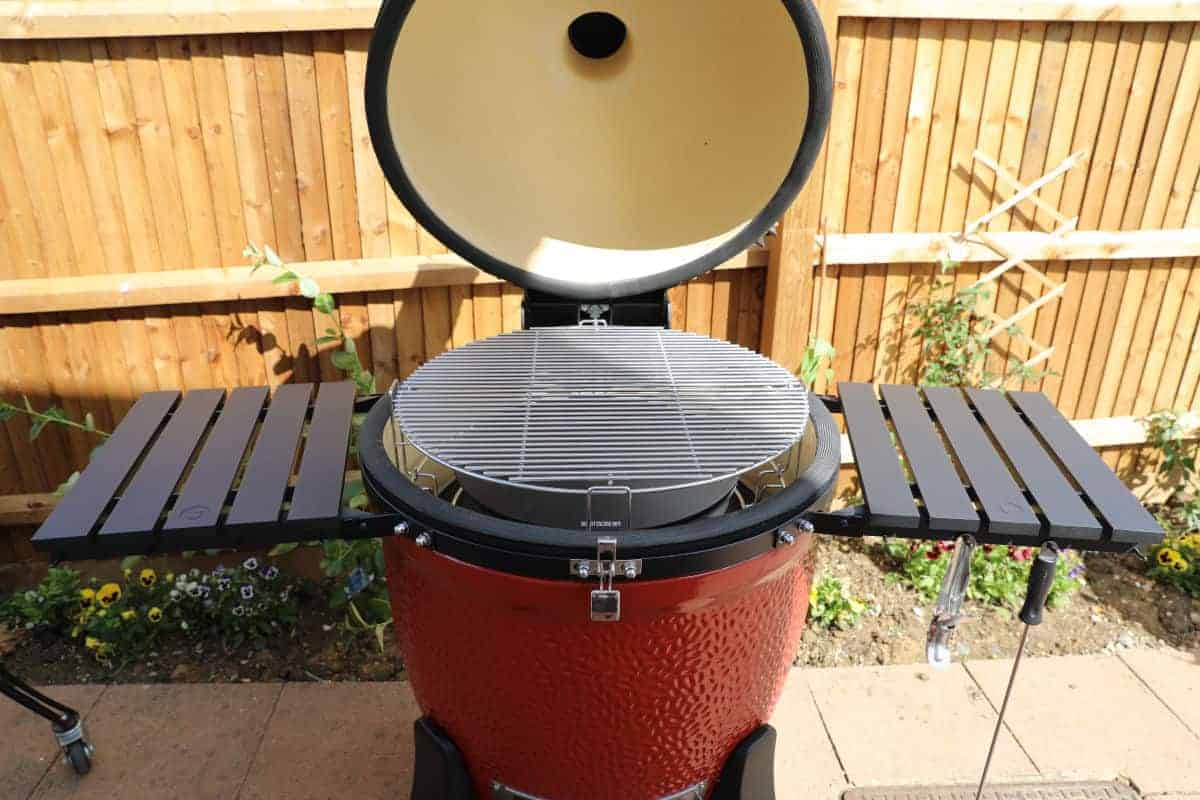
As with any investment (and a Kamado is an investment, not a purchase), you’ll want to do your homework before you go out and plunk down your hard-earned cash.
All Kamados are not created equal. But what distinguishes the good from the mediocre?
Here are some things to look for, and features you may wish to have.
Build Quality
As with every popular consumer good, once a product catches on, low-cost options suddenly appear. I’m all for saving money, but not if that means seriously compromising the quality of the item.
Low-cost Kamados may have thinner walls that will struggle to hold a constant temperature. The whole point of a Kamado is heat retention, so why would you want to give that up? Fit and finish may also be an issue on a cheaper model. Watch for low-grade metal fittings that might rust, and thin gaskets that may not seal tightly.
A small price tag might be appealing, but a more expensive, better-built unit will pay off in the long run by lasting longer and providing a better cooking experience.
Work Space
Although not necessary, I couldn’t imagine having a grill without somewhere to set my utensils, my sauces and seasonings, and, in the summer, my frosty beverage.
Personally, I’d be shopping for a model with attached work surfaces. The other option is to buy a table or large stand to place the Kamado on. Most manufacturers offer carts and tables custom-made to fit their grills.
Construction Material
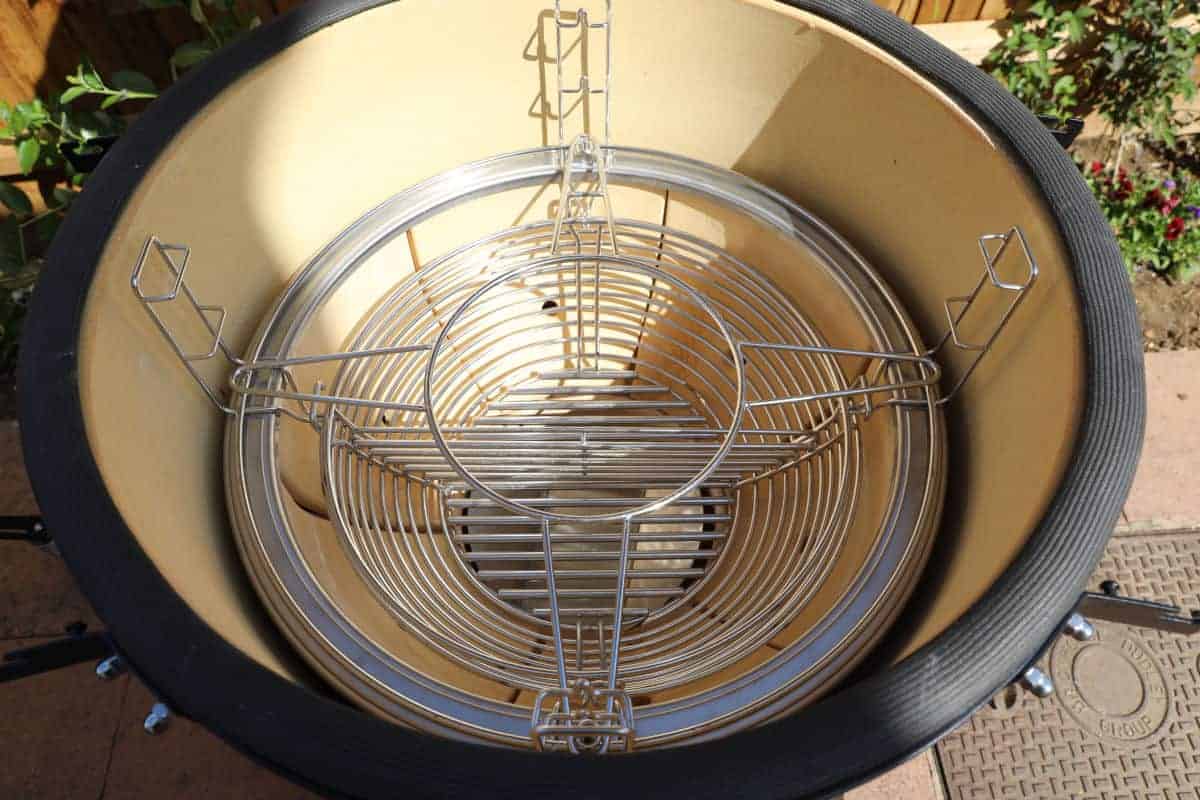
Most Kamados are either made of ceramic, or stainless steel (usually coated in enamel). Oh, and there is one cast aluminum model on the market.
What material you choose is up to you, and they all have their pros and cons.
I lean towards the ceramic — the material seems to hold its heat a little better, and of course there’s no chance of rust. However, if you think you might move yours around a lot, you may prefer a metal Kamado because they are far less likely to crack if dropped.
Size
Many sizes of Kamado are available from pint-size to grill almighty.
The average model has less square inches cooking surface than the average gas or charcoal barbecue. Make sure to choose a unit that has enough space for your needs.
If you want to cook big racks of ribs, or feed the extended family in one sitting, you’ll need a big model. But if you’re just looking to serve your wife and kids, or a few buddies, a smaller cooker may suffice.
Withstanding the Elements
Grills generally stay outside year-round, so look for rust-resistant fit and finish to prolong the life of your Kamado.
You should probably think about a cover, too, to keep water from getting in the top vent.
Accessories
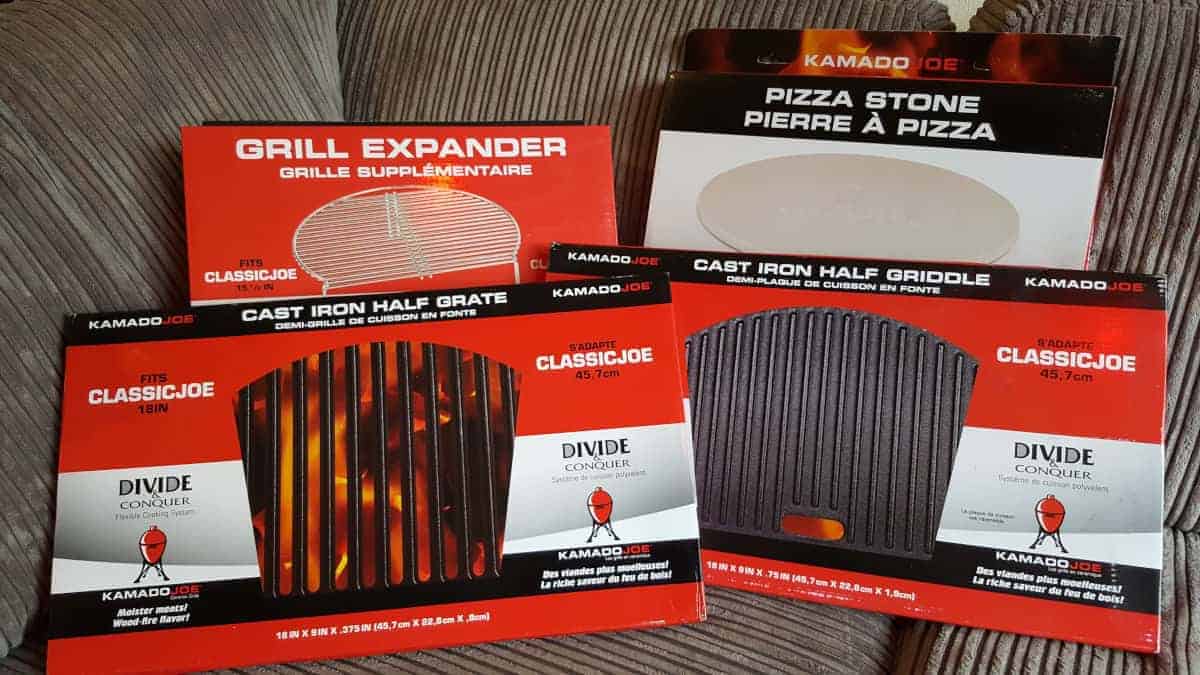
Part of the fun of a Kamado is its versatility. You’ll be amazed at the add-ons available for most models, from stacking grills, to skillets, pizza stones, rotisseries, and more. Beyond the cooking surface there’s also ash baskets and rakes, carts, and more.
Some manufacturers include more of this stuff than others do. Before settling on one Kamado over another, check to see what extras come included, and which you’ll need to purchase separately.
If the only difference between two grills is cost, you may find that difference is erased or even reversed by the time you pick out the bits and pieces you’ll want and need.
Warranty and Customer Service
Anything can break, and ceramics are especially at risk for cracks and chips. There are also parts that can wear, like hinges and seals, and then there are all the bits and pieces inside.
Look for a warranty that provides good, comprehensive coverage; some companies offer a lifetime of coverage, and some offer little or none.
It’s impossible to know precisely what a manufacturer’s customer service is like until you have to put it to the test. What you can do is check to see what kind of responses people get when they post questions online.
Look for social media posts, or a feedback section on the manufacturer’s website to gauge what dealing with them might be like.
Previous Buyer’s Opinions
If you have friends with Kamados, chat with them to see what their experiences have been. Has it lived up to expectations? Would you buy it again?
Check around online, too. There are plenty of Kamado grill forums, and you can read reviews from owners. Company websites might give you some insight, too. Of course, you’re already here, so the easiest thing to do is just to keep reading and find a lot of info all in one place, rather than combing the Internet all day.
Budget
Ah yes, the all-important budget.
It’s good to have a dollar figure in mind that you’re comfortable with and to try to stick with it. Be realistic, though; a good Kamado is not inexpensive, though prices range from around $300 for a lower quality product up to many thousands of dollars for the biggest and fanciest models.
Consider what you get for your money, and how long you hope to have the grill for. To my mind, it’s always better to stretch the budget to get a quality product that will last a long time, if stretching will make the difference. Better to buy a high-quality grill once, than to replace a low-cost unit every couple of years.
What is a Kamado Grill? — The History of The Kamado
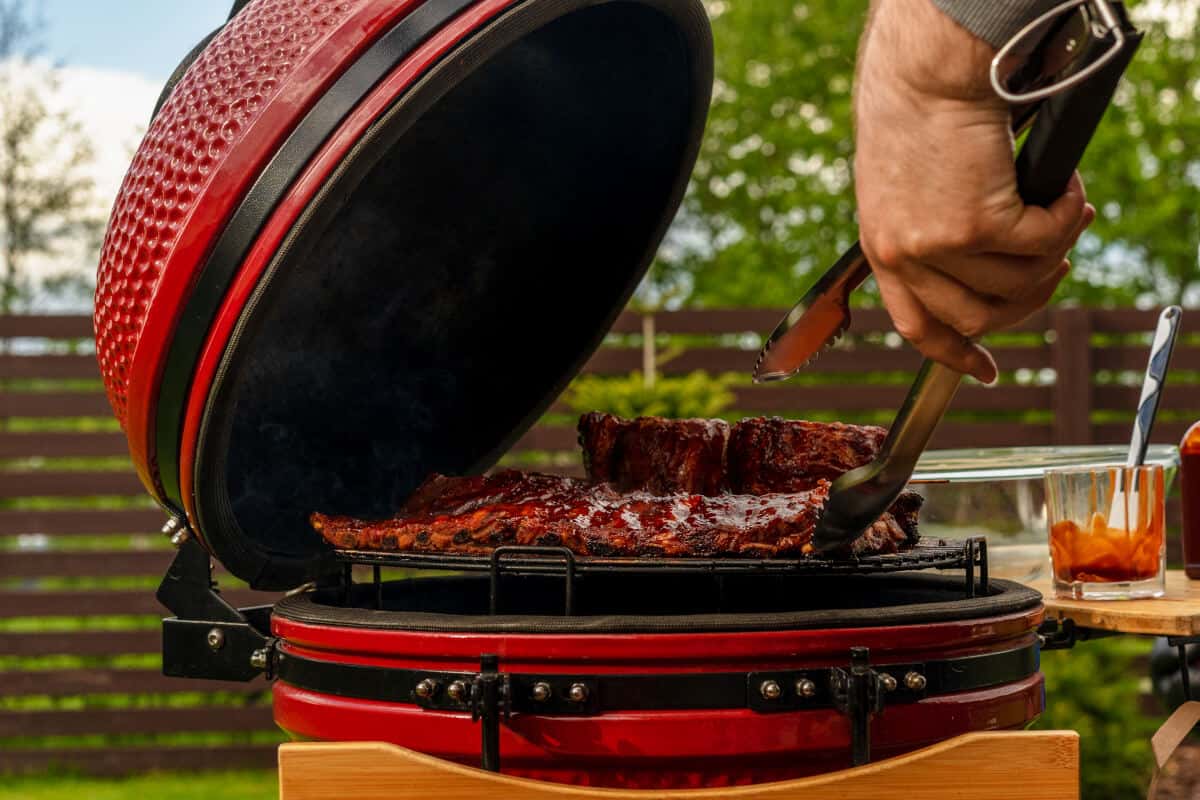
A Kamado grill, for the uninitiated, is both the latest revolution in barbequing and just about the oldest form of outdoor cooking other than sticking things right in the fire.
Wait, a what? A Kamado? Isn’t that the huge lizard that eats hoofed mammals? Close, but that’s a Komodo.
In fact, Kamado-like ovens have been around for several millennia. There is some disagreement as to the exact timeline, but here are the basics in a nutshell.
A type of clay cooking vessel developed in China made its way to Japan. Over time, the Japanese adapted it to become a first-rate rice cooker, and they called it “mushikamado.” It’s not unlike its cousin, the tandoori oven, and the two may have shared roots. It is also possible the Japanese deliberately incorporated tandoori technology in their cookers. By the way, “kamado” translates to “cooking range,” or, “stove.”
We’ll skip ahead now to the 1940s. American soldiers stationed in Japan brought home souvenirs from their deployment, including hibachis and Kamados. The American contribution to the development of the Kamado was to adapt it to grilling rather than cooking rice. Some clever folks added the lid and hinges, plus the ability to control the airflow.
An Atlanta, Georgia importer began stocking Kamados in the early 1970s, and his personal improvements, including switching from clay to ceramic, led to the creation of the Big Green Egg. The Egg dominated the industry for years, but now many grill makers offer their own takes on the Kamado.
Whew! That turned out to be a pretty big nutshell!
How Does a Kamado Grill Work?
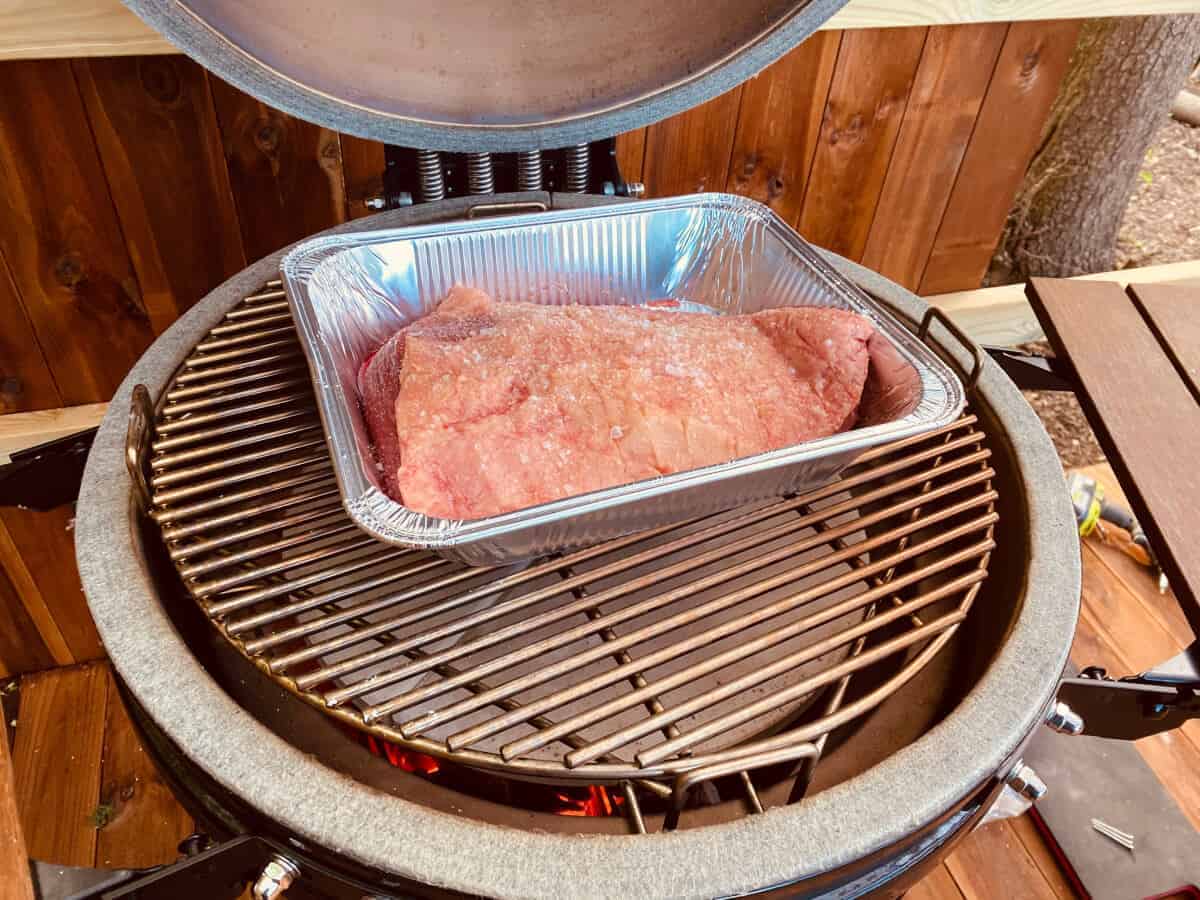
Kamados are distinctively egg-shaped and very easy to recognize. Typically, the cooking vessel sits on a stand, though more traditional-looking tables are available. Some may feature work surfaces attached to the outside of the grill.
The lower two-thirds of the Kamado is where the coals burn beneath the grill. The top section is a domed lid, usually with a thermometer built-in. Top and bottom vents are how you control the temperature.
A good Kamado seals tightly when the lid is closed, and the interior is designed and built to reflect the heat evenly around the interior. Ceramic is the most commonly used material, though metal models are also available.
Rather than using briquettes, they work best with lumpwood charcoal. (There are some who swear up and down that briquettes work just fine, however.)
For smoking, you can add big hunks of wood to your charcoal. The fire sits near the bottom of the cooker on a small grate above the firebox. Air flows in from the bottom, and ash falls into an ash catcher.
A fire ring sits above the smoldering coals, upon which the grill rests. Various accessories can also be placed on the fire ring, but we’ll come back to those later.
As mentioned before, the grill is at the top of the lower section of the Kamado. The upper section is the hinged lid, and the adjustable-top vent caps the whole thing.
What’s So Great About a Kamado?
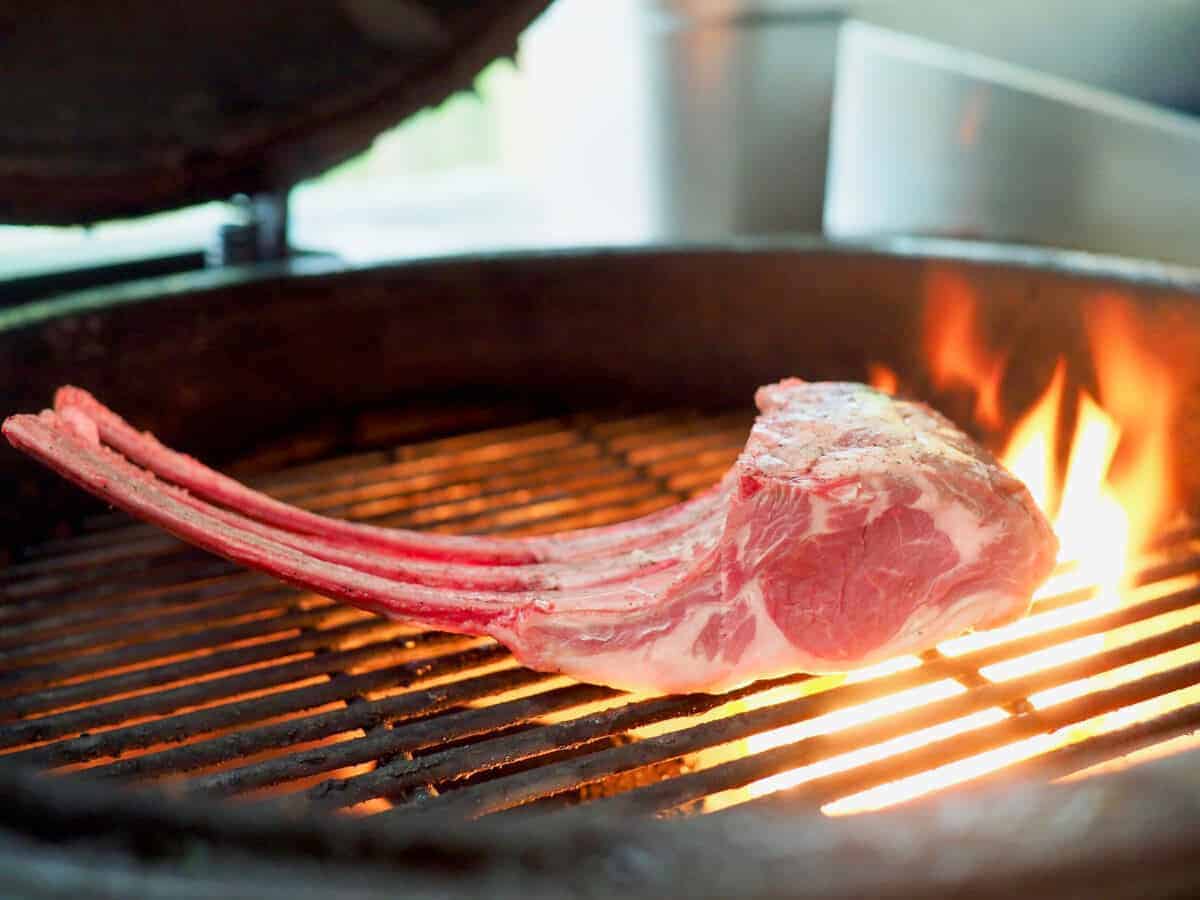
A cursory look at Kamados reveals a price range from about 150 bucks for a small, entry level cooker to $4500 for an XXL top of the range model. The bulk of the selection seems to fall roughly in the $750-$1300 range, however.
Regardless, that’s a fair chunk of change considering you can pick up little charcoal grills for about the price of a case of beer, or an electric smoker for a couple of hundred bucks! So what makes a Kamado worth the splurge?
Firstly, as I said before, this is an investment. They are a finely crafted piece of cooking equipment, and it will last for years and years, so long as you keep up with the minimal maintenance required.
Secondly, the cooking experience is second to none. Most grillers, once they go Kamado, never go back. This is more than a hot surface for searing steaks and barbequing burgers. They provide versatility galore.
For example, because of the precise control you have over the airflow, with a little practice you’ll learn how to hold a desired temperature for as long as you need. And not much practice is required, kamados are reasonably easy to learn and master, making them one of the best smokers for beginners.
“Low and slow” cooking of meats like brisket and ribs is a piece of cake on a Kamado. But, if you like your outdoor cooker to act more like a solar flare, you can open the vents wide and watch thermometer rise and rise and rise! High heat is perfect for searing steaks. You can also bake, roast and cook pizza on a kamado, as we discuss further in our guide to using a kamado grill.
Another significant advantage of a Kamado is its ability to cook evenly because of the reflected heat.
Ever tried to make pizza on a BBQ? It’s challenging and requires constant attention, and you’ll probably end up eating a lot of burnt pizza before you perfect your technique. The even heating of a Kamado makes it an ideal outdoor pizza oven, or you could try baking bread.
Are There Any Drawbacks?
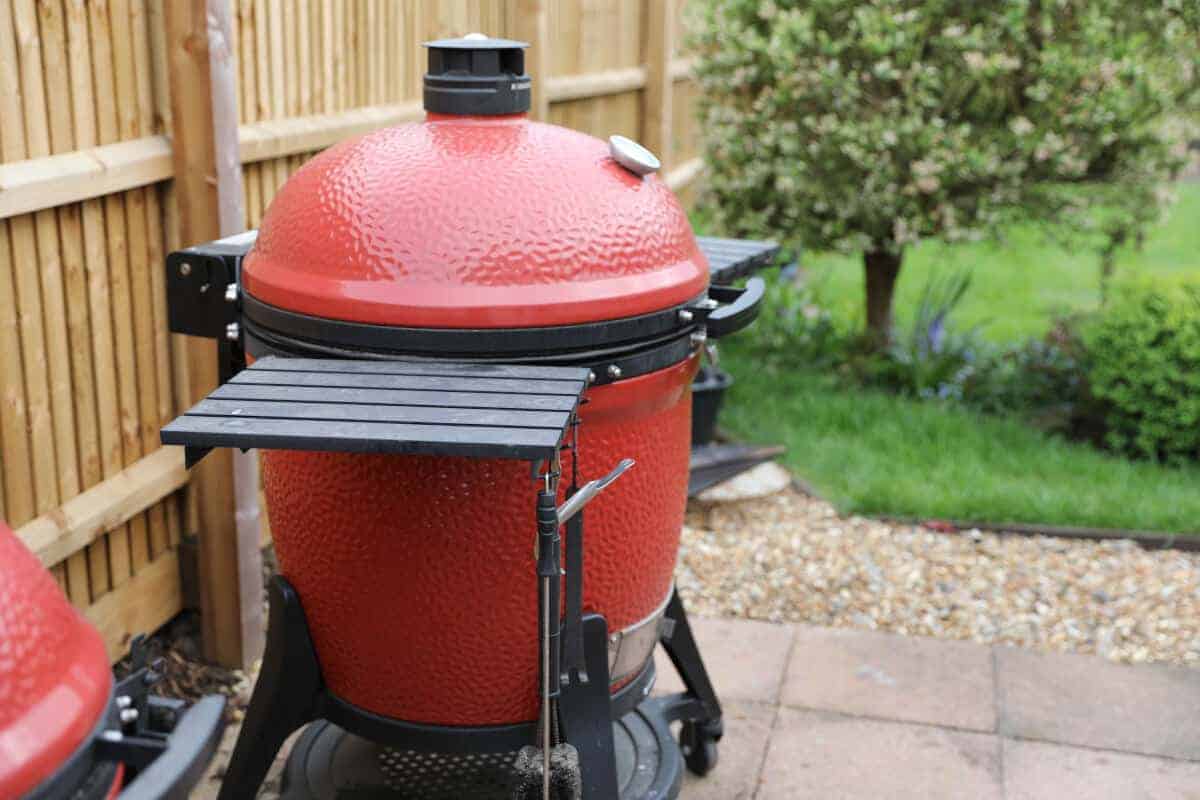
That’s a great question, and I’m glad you asked! While a Kamado offers superior outdoor cooking in many ways, there are some limitations and a few downsides.
The Size
The most obvious issue with many Kamado grills is the size.
A lot of units offer relatively small cooking surfaces. You may find yourself cooking in rounds in order to get everyone fed.
If you plan on cooking for groups regularly, look for a larger grill. They come in many different sizes, from portable to massive. Be sure to pick the size that best suits your needs.
Lack of Different Heat Zones
Many people utilize multiple heat zones when barbequing. In most cases, you toss the meat onto direct heat to sear it and get those lovely grill marks, and then move it to an area of indirect heat to finish cooking.
Kamados are great for creating even heat all over, which means there is only one temperature zone. Fortunately, it’s possible in many models to fit special inserts to create an indirect heat zone.
The Weight
Most Kamados are very heavy and difficult to carry around. A good size cooker is going to weigh 150 pounds or more.
Be sure to invest in a stand with sturdy casters if you plan on moving your grill around the yard. Also be aware that as they are ceramic, they will almost certainly crack if dropped.
The Learning Curve
A Kamado can work up to extremely high temps with ease. That’s awesome for searing but useless for cooking anything thicker than half an inch, or so.
You’ll need to spend time learning the vent system to master temperature control.
Some folks feel Kamados are only suited for smoking and slow cooking, but I do not agree. There’s a bit of a learning curve, but the versatility more than makes up for the time it takes to master this unique style of cooker.
Flashback
Did you ever see the movie Backdraft? Of course not, nobody did. But, maybe you know it’s about the way that fire can suddenly flare up when it’s starved for oxygen, and a new source of O2 is introduced?
On the scale of a burning house, it’s downright deadly. For a barbecue, it’s more of a potentially dangerous nuisance.
A Kamado can keep its heat in part due to the tight seal between the lid and the main body. If you close all the vents, the burning charcoal will soon use up the supply of oxygen. Should you open the lid to have a peek before the coals are completely extinguished, you run the risk of a nasty flare up.
Don’t believe me? Have a look at this video.
Conclusion
If you weren’t sure a Kamado was right for you before you started this article, I hope you have found the answer. They are a unique and versatile style of outdoor cooker, and the right one will provide years of enjoyment and mouth-watering food.
You’re only limited by your imagination, and if you like all kinds of food, you’ll never get bored with your Kamado. Yes, they cost a bit more than the average barbecue, but I think they’re worth the investment.
All the grills listed above will do the job and do it well, but, to my mind, there’s a clear choice for the top recommendation.
The Kamado Joe ties up useful accessories, innovative features, quality workmanship, and a great community of support in one neat package. You really can’t go wrong with this remarkable product, and I’m confident you’ll love cooking on it.
Whichever model you choose, I hope you soon find yourself making the kinds of meals you thought could only be made by professionals.
Got a favorite Kamado meal, or a story to share? Drop a comment below and share with the world!
Happy grilling!


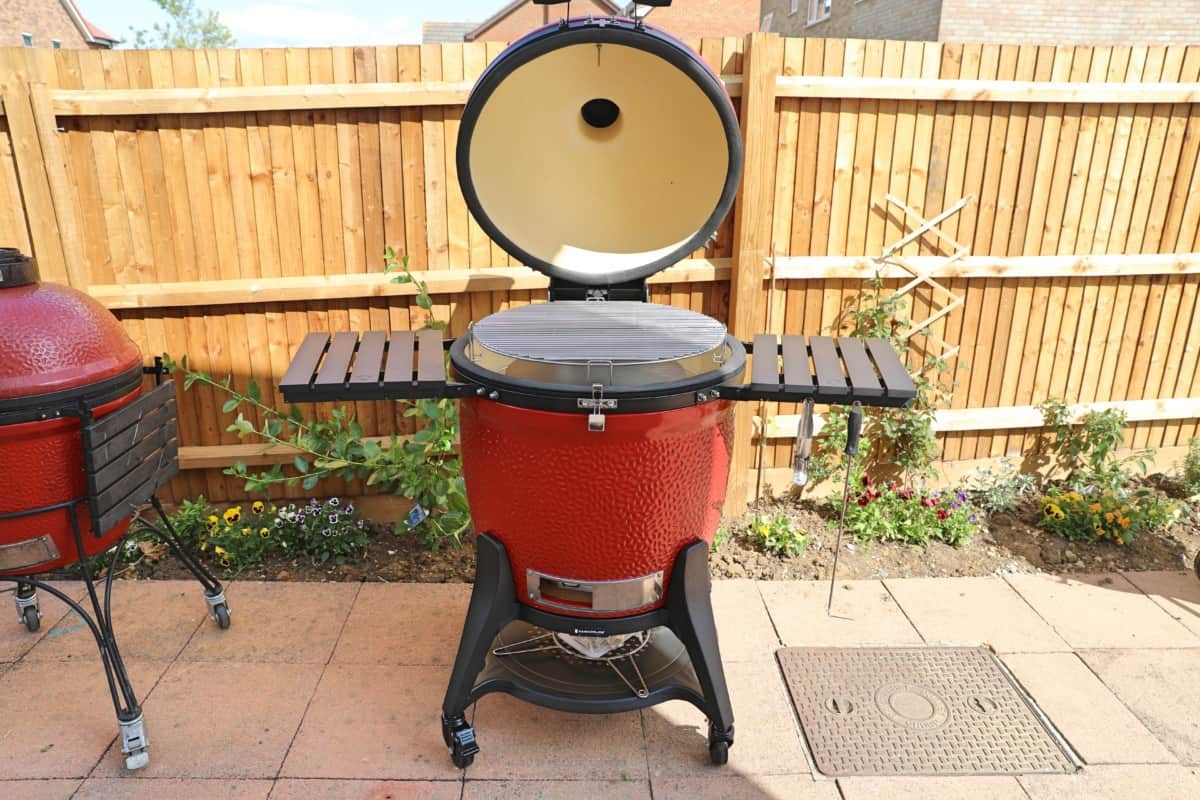
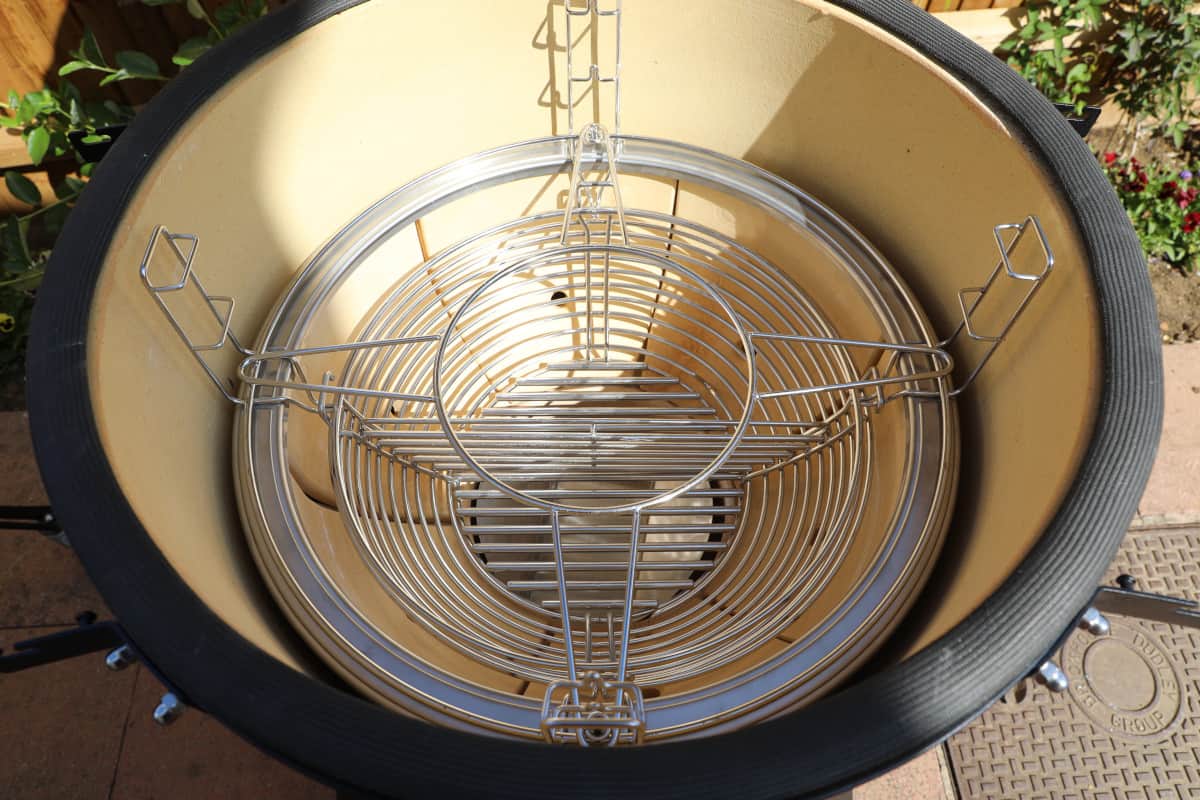
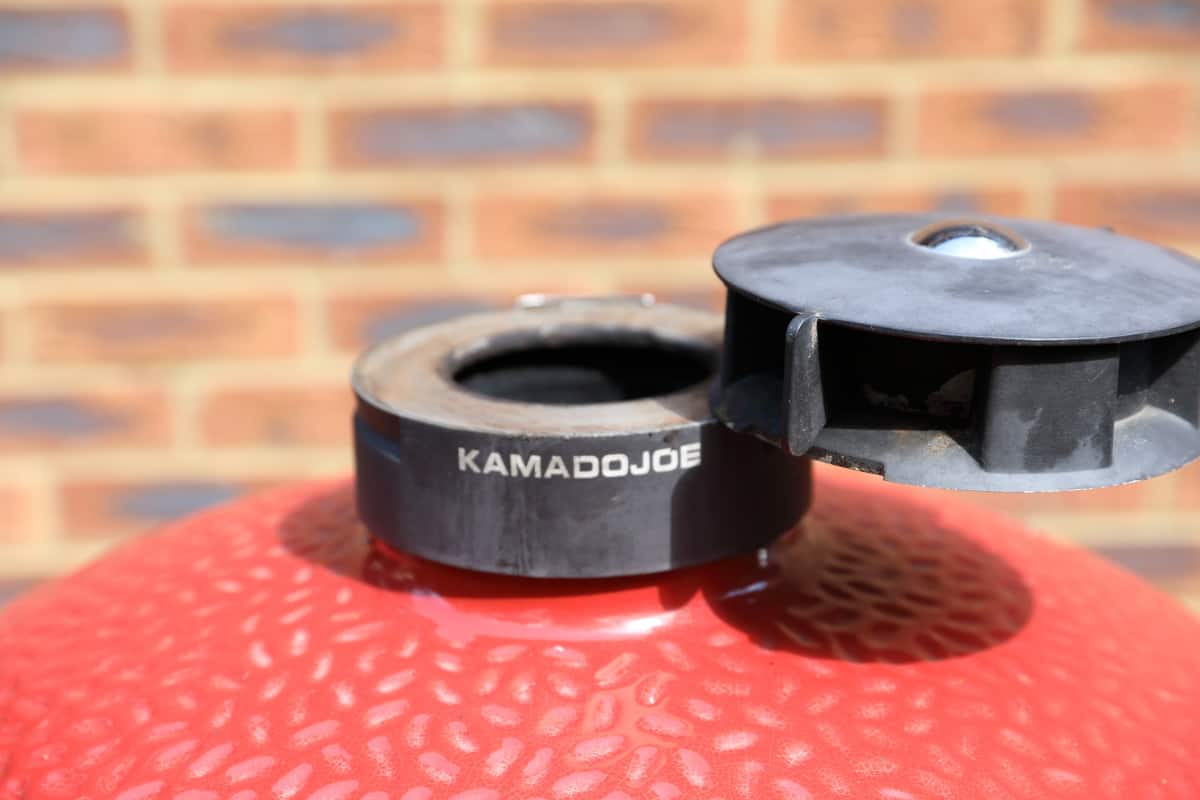
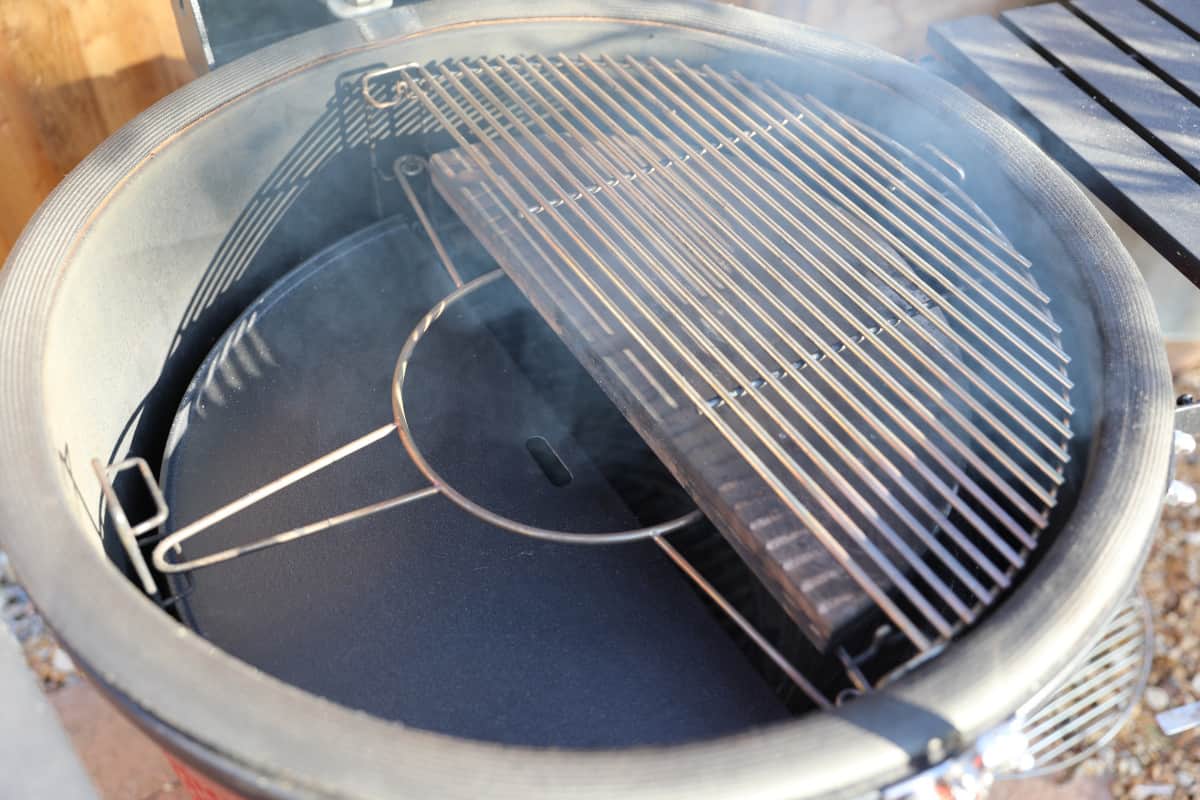
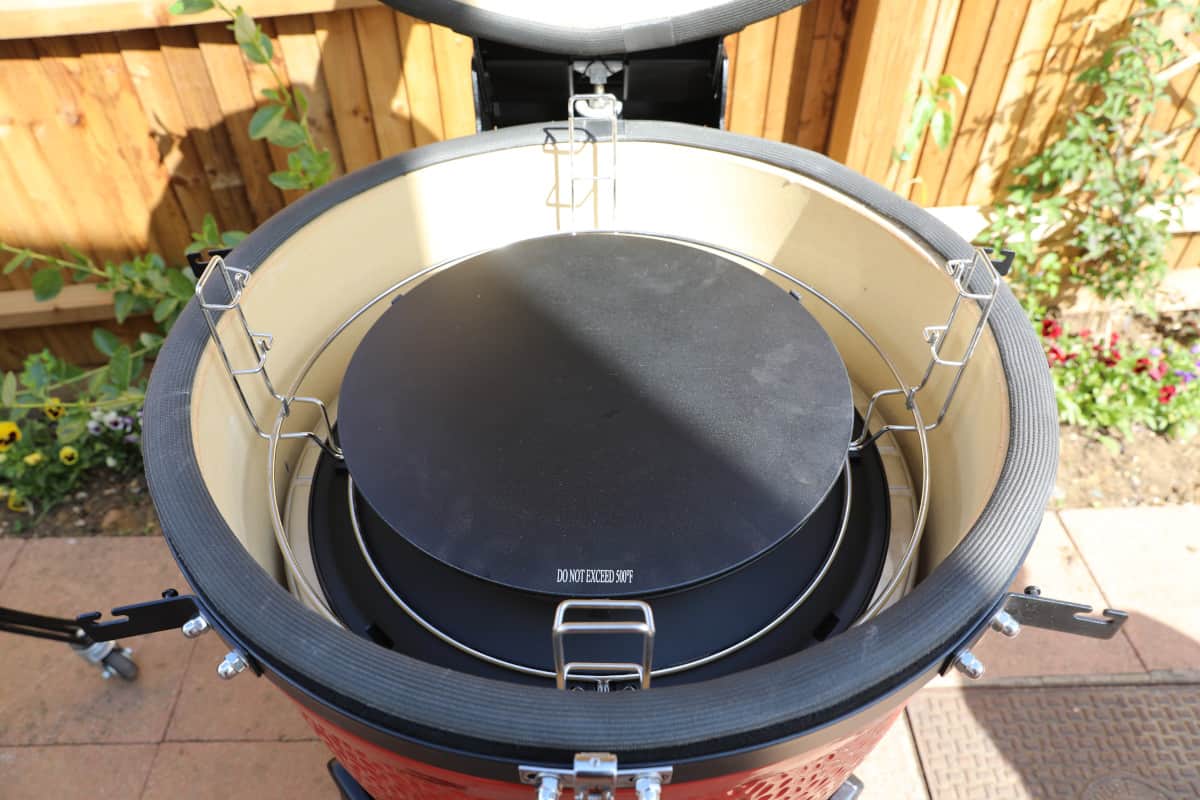
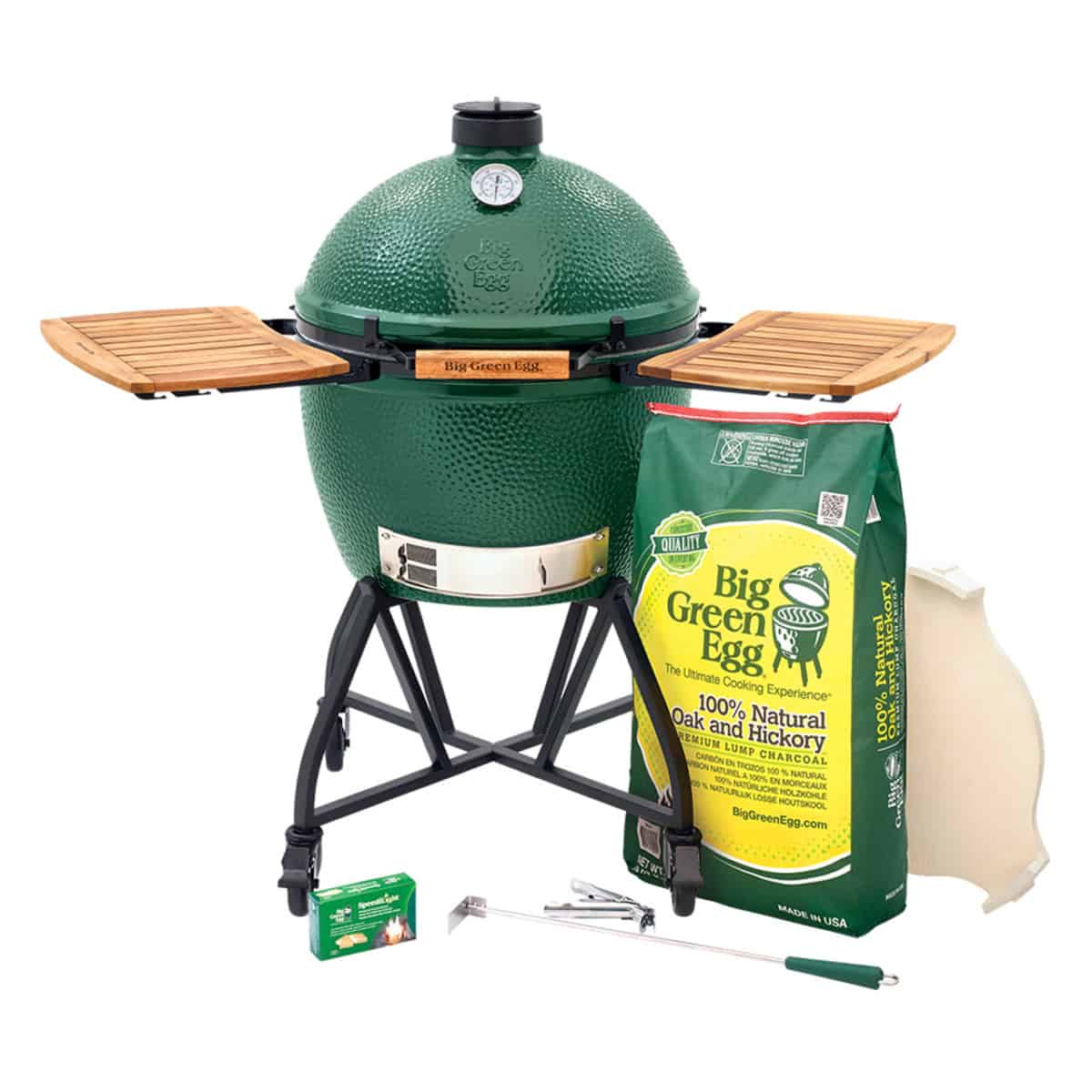
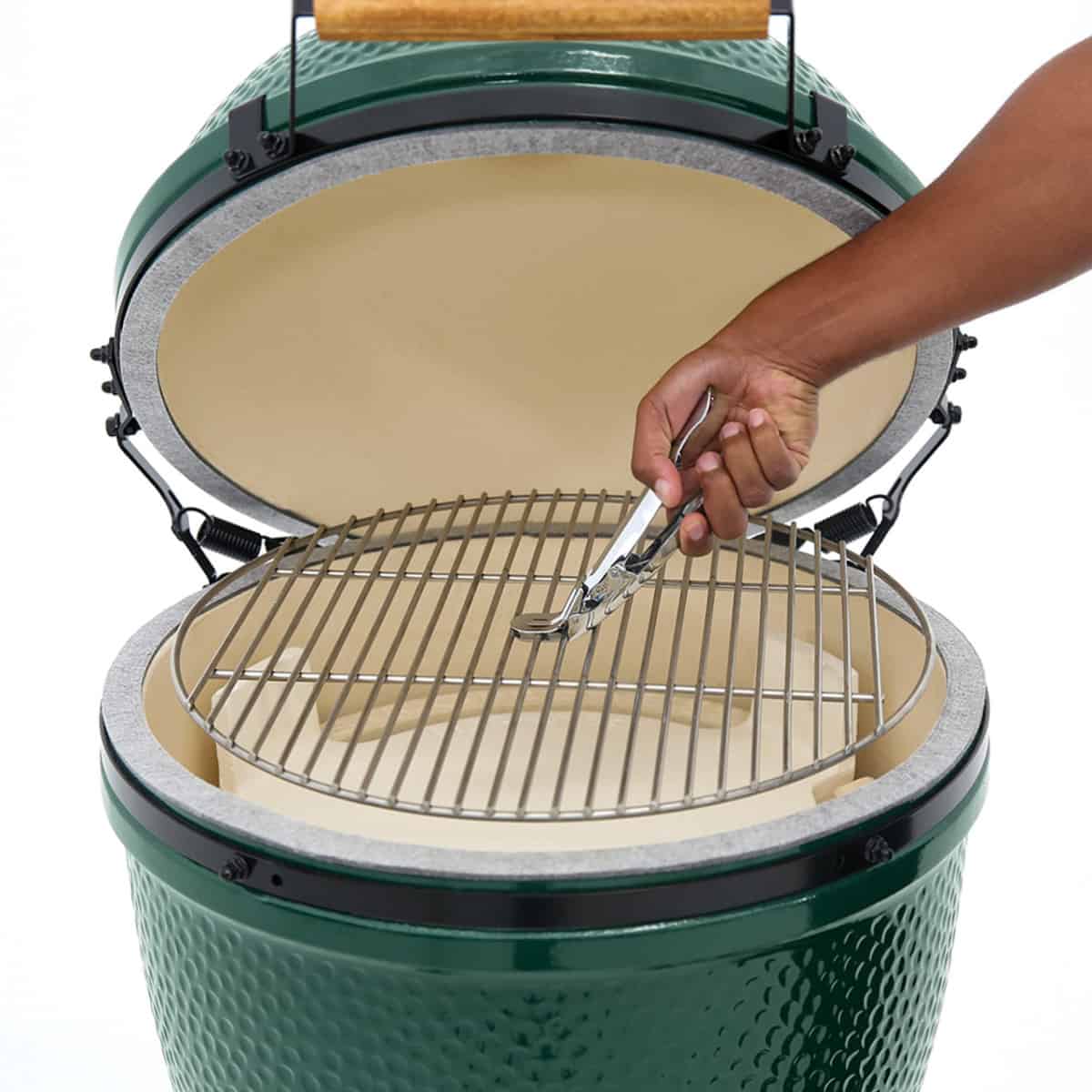
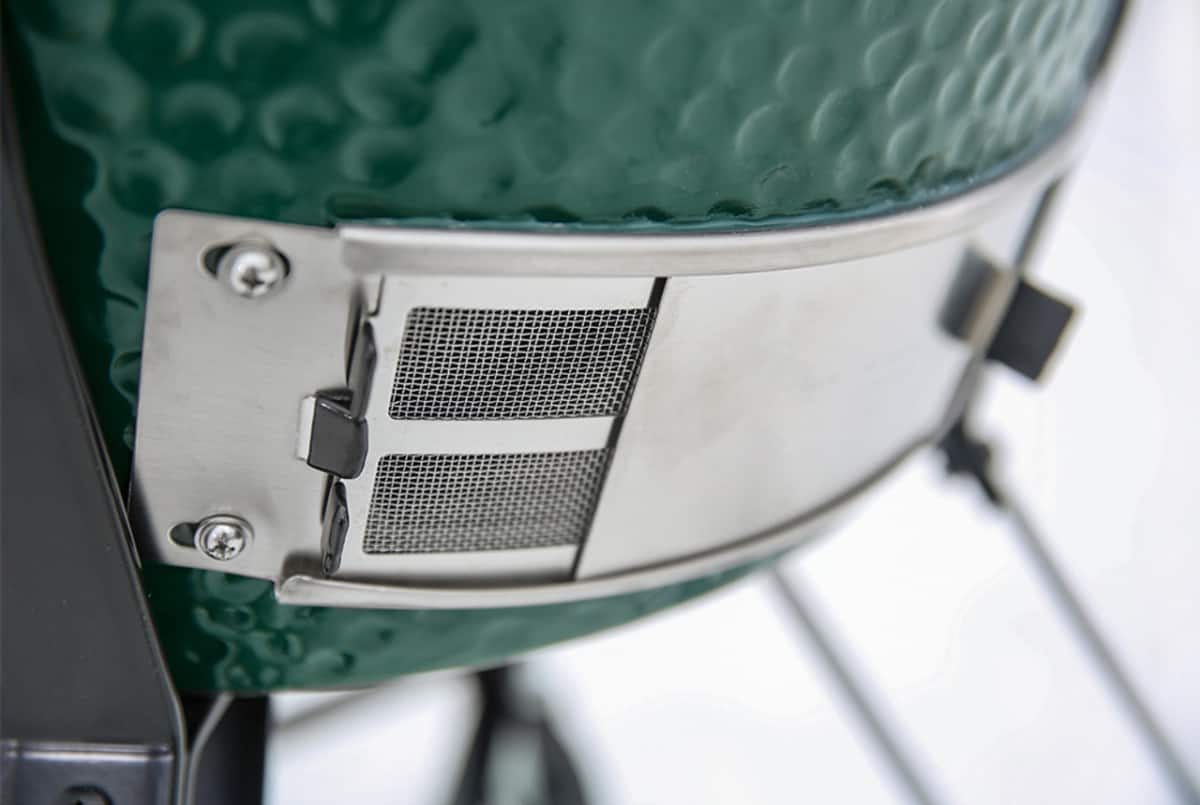
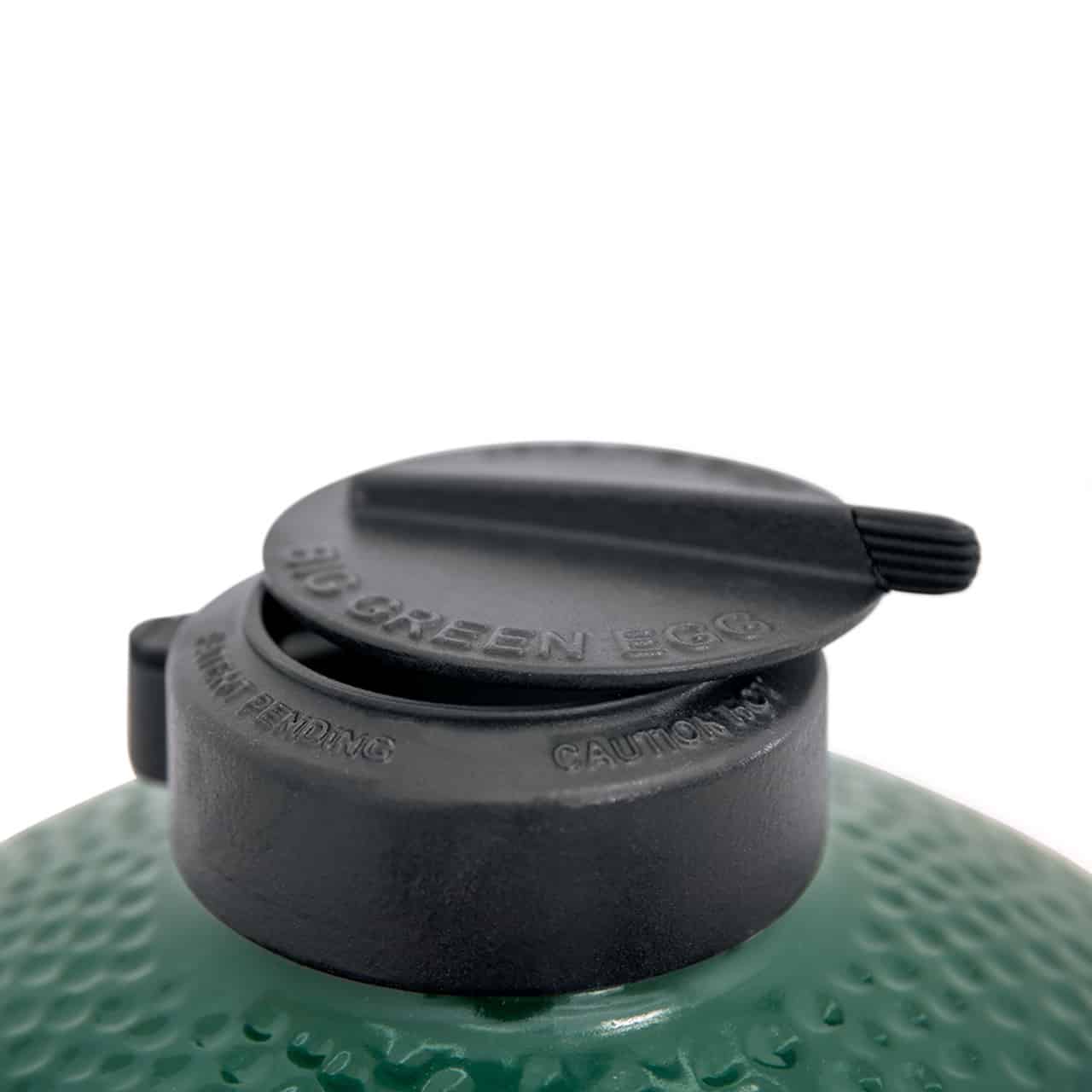
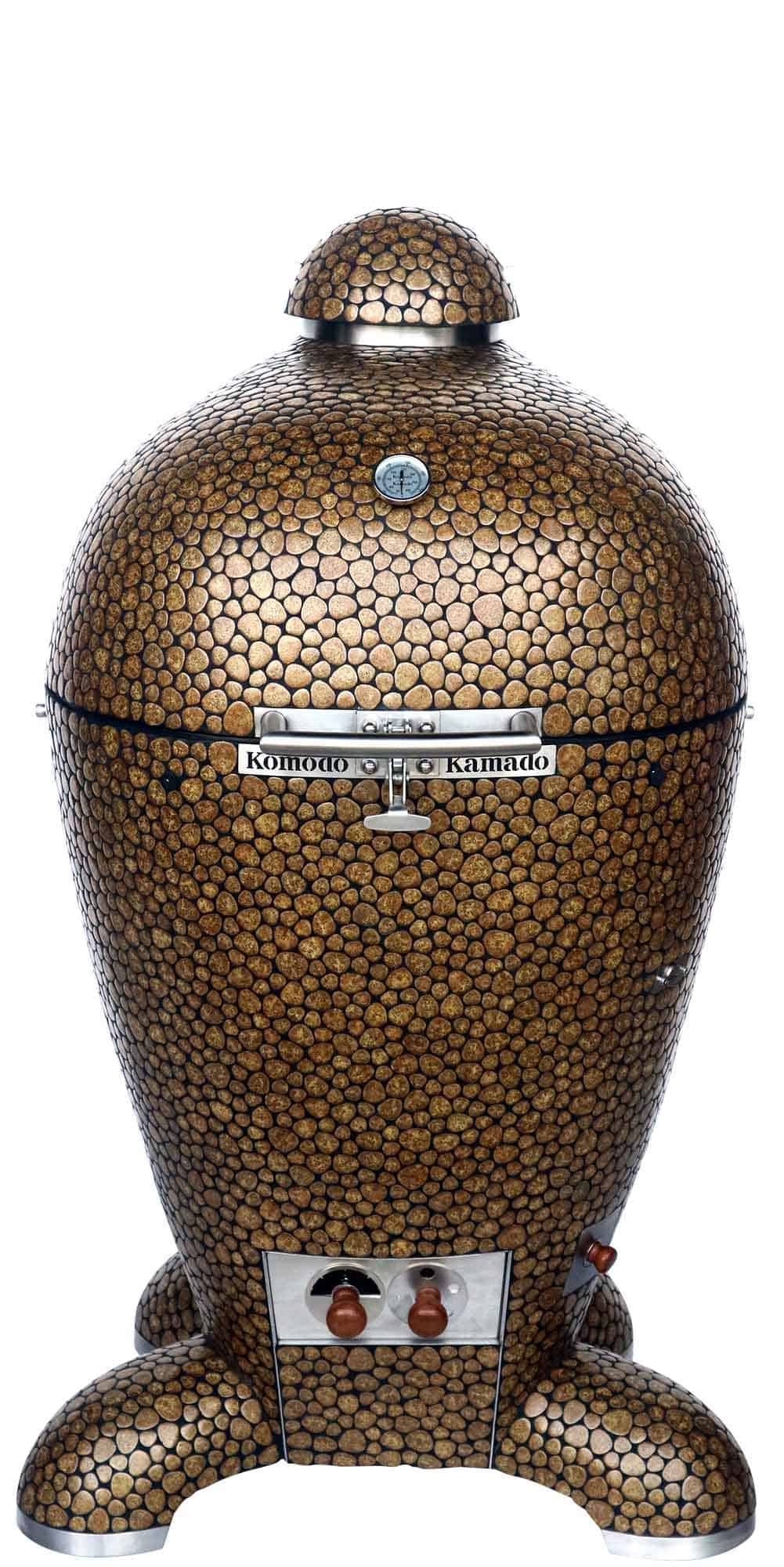
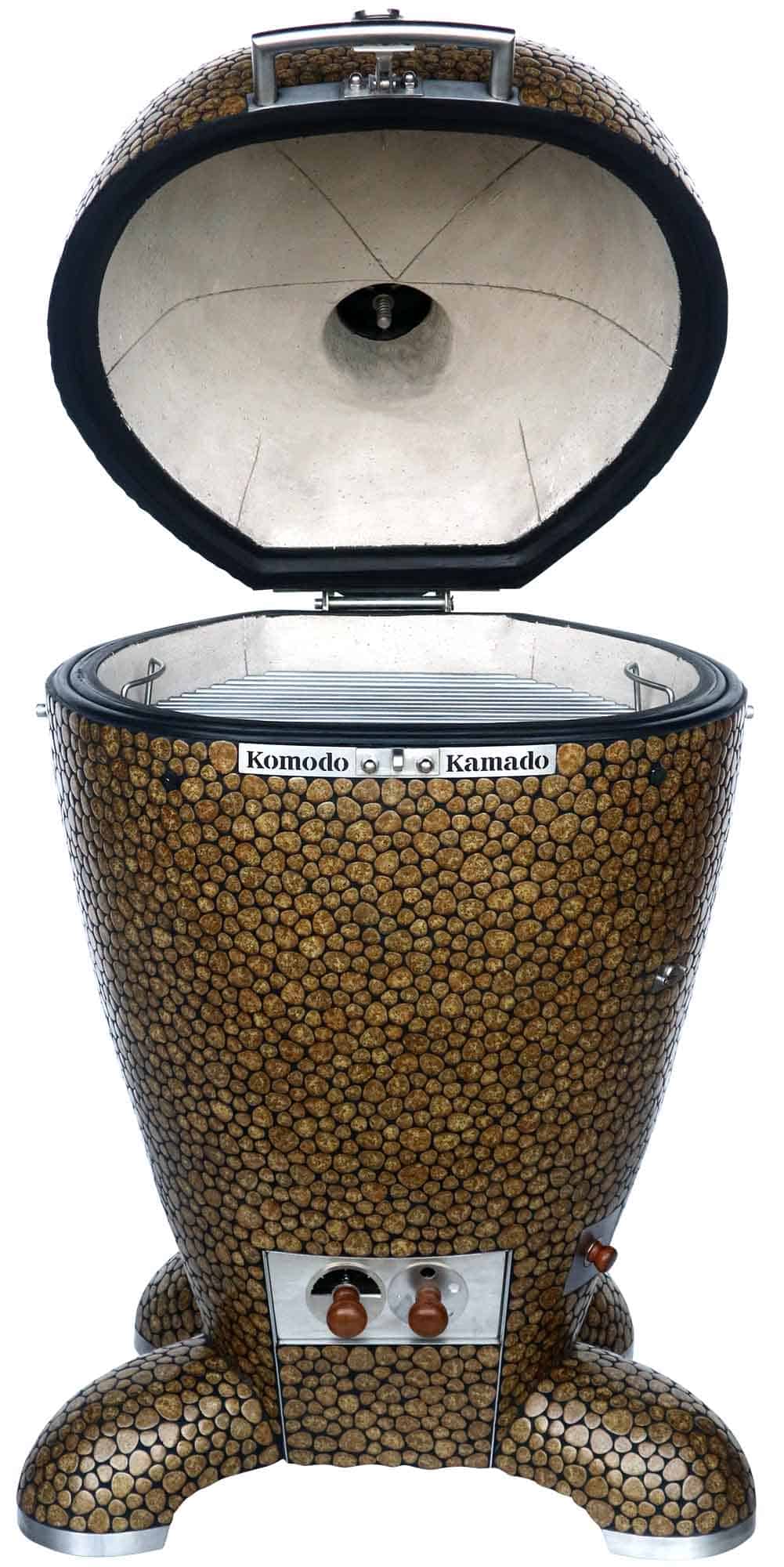
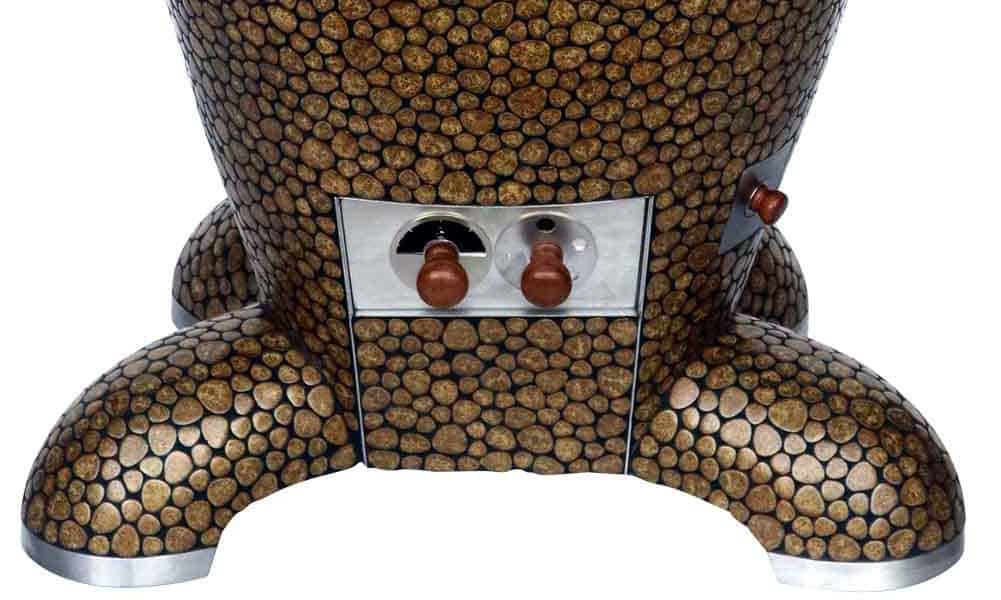
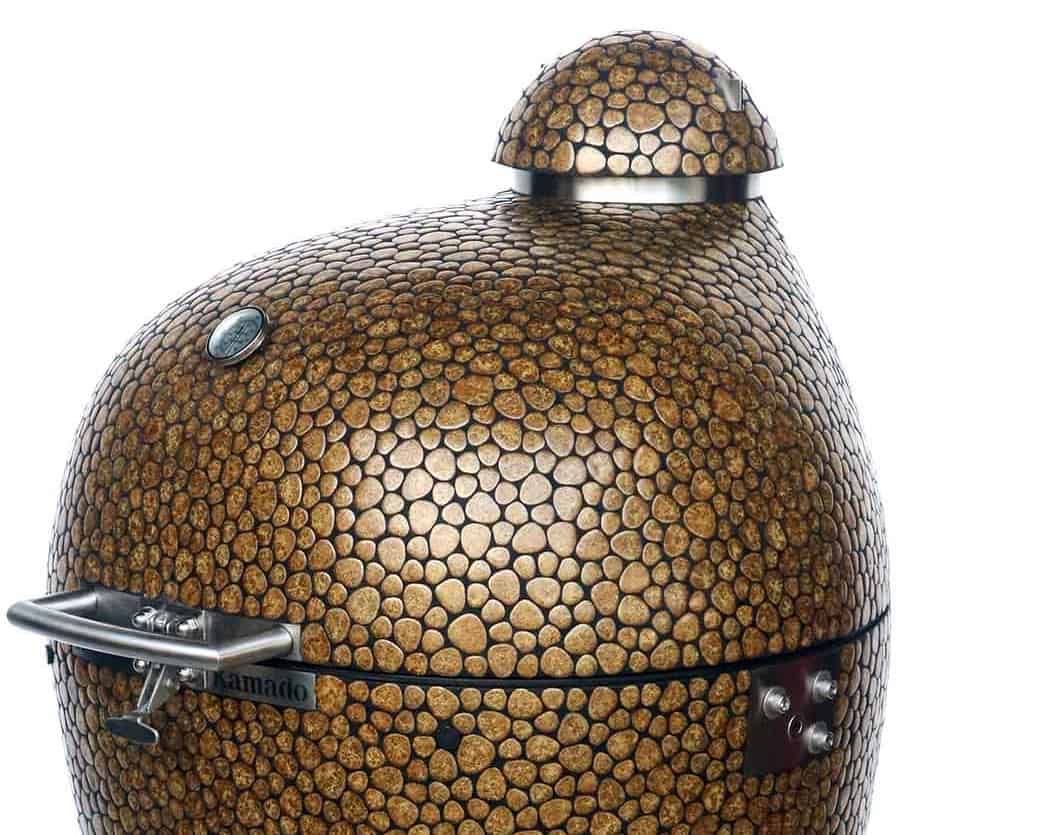
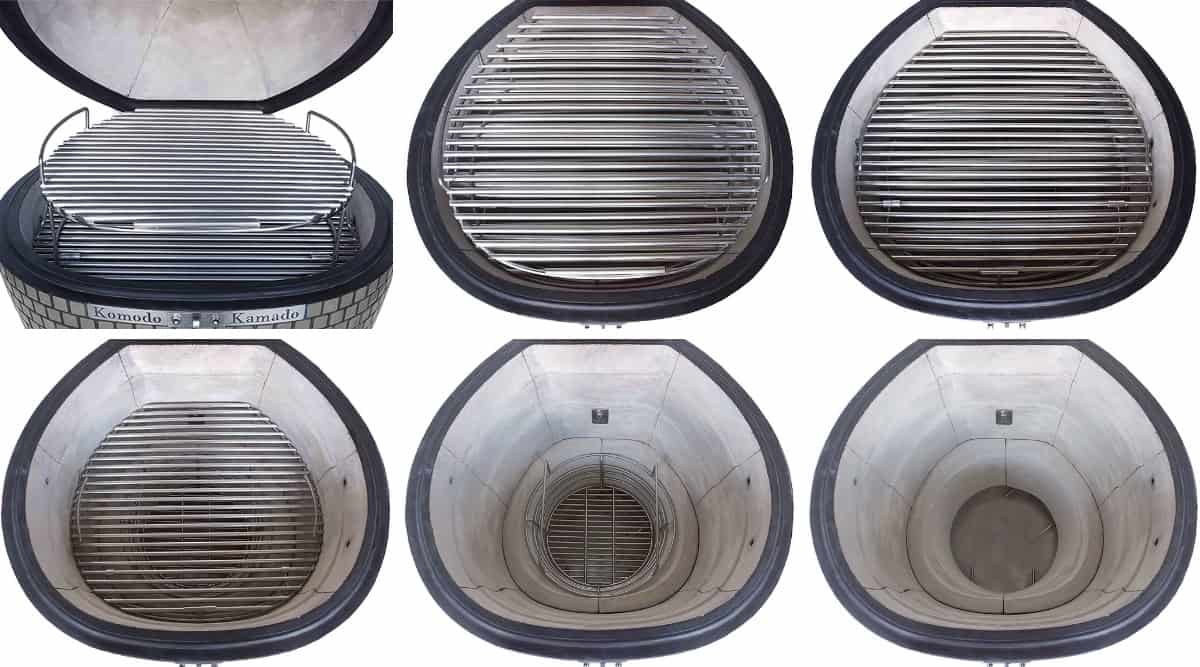






























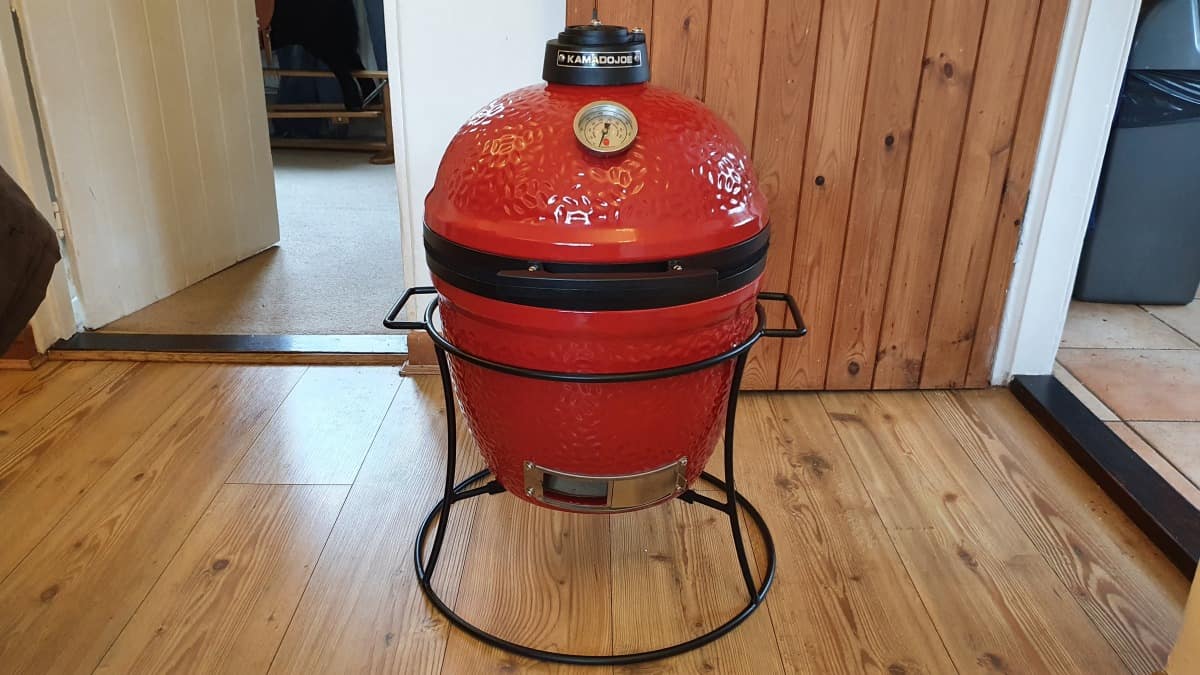
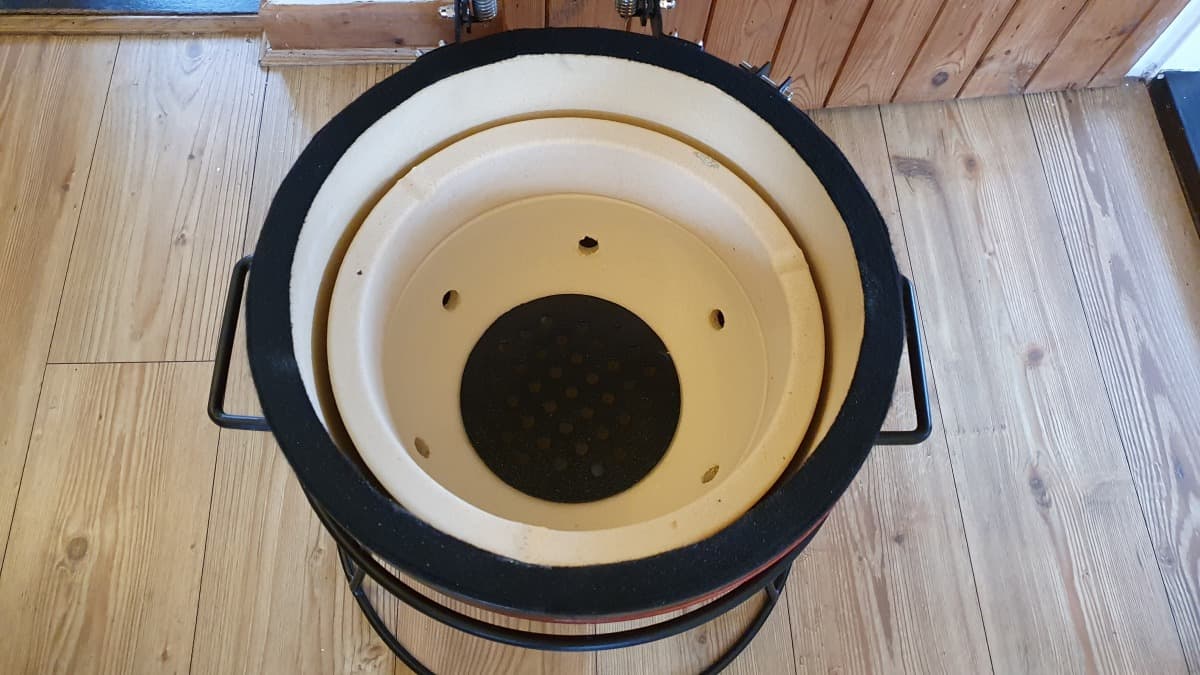
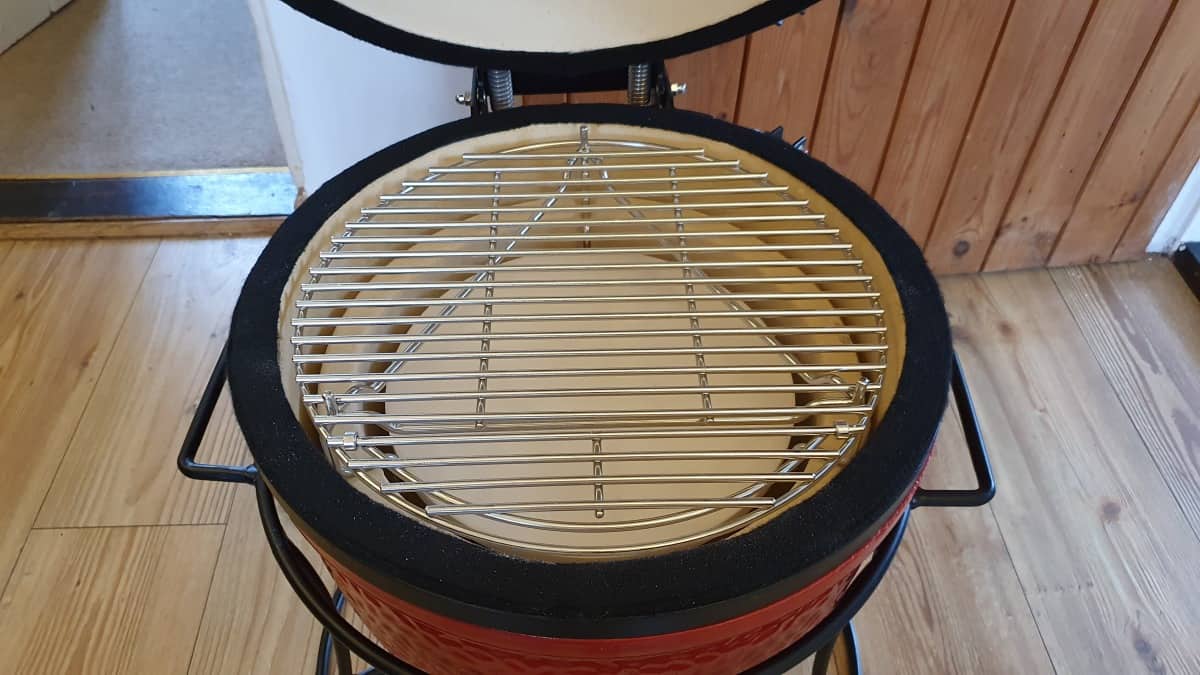
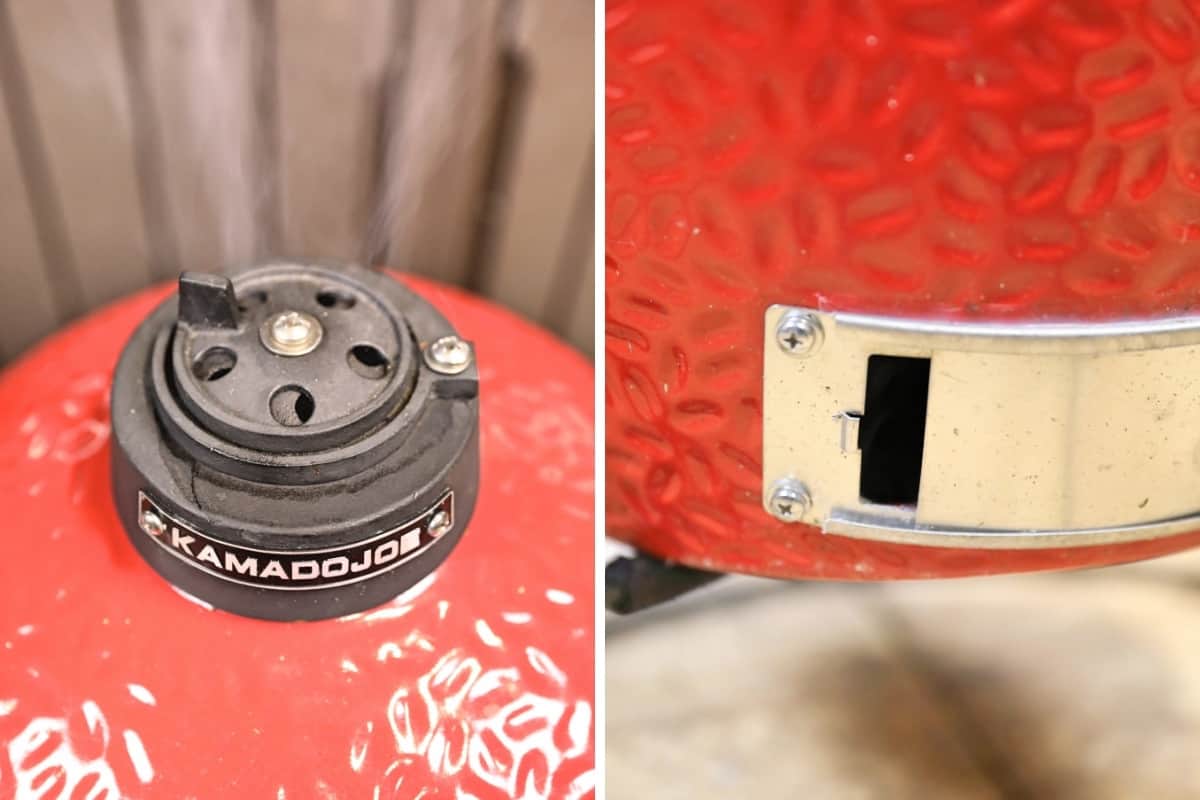
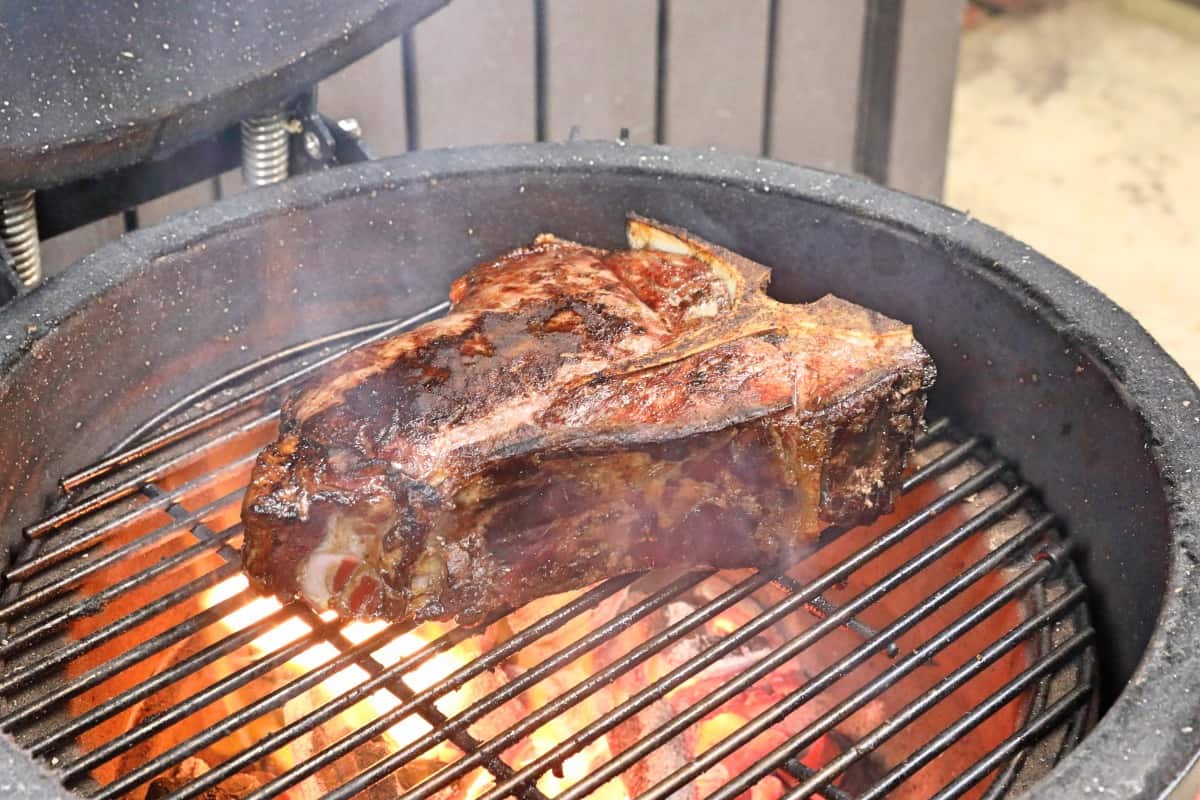




















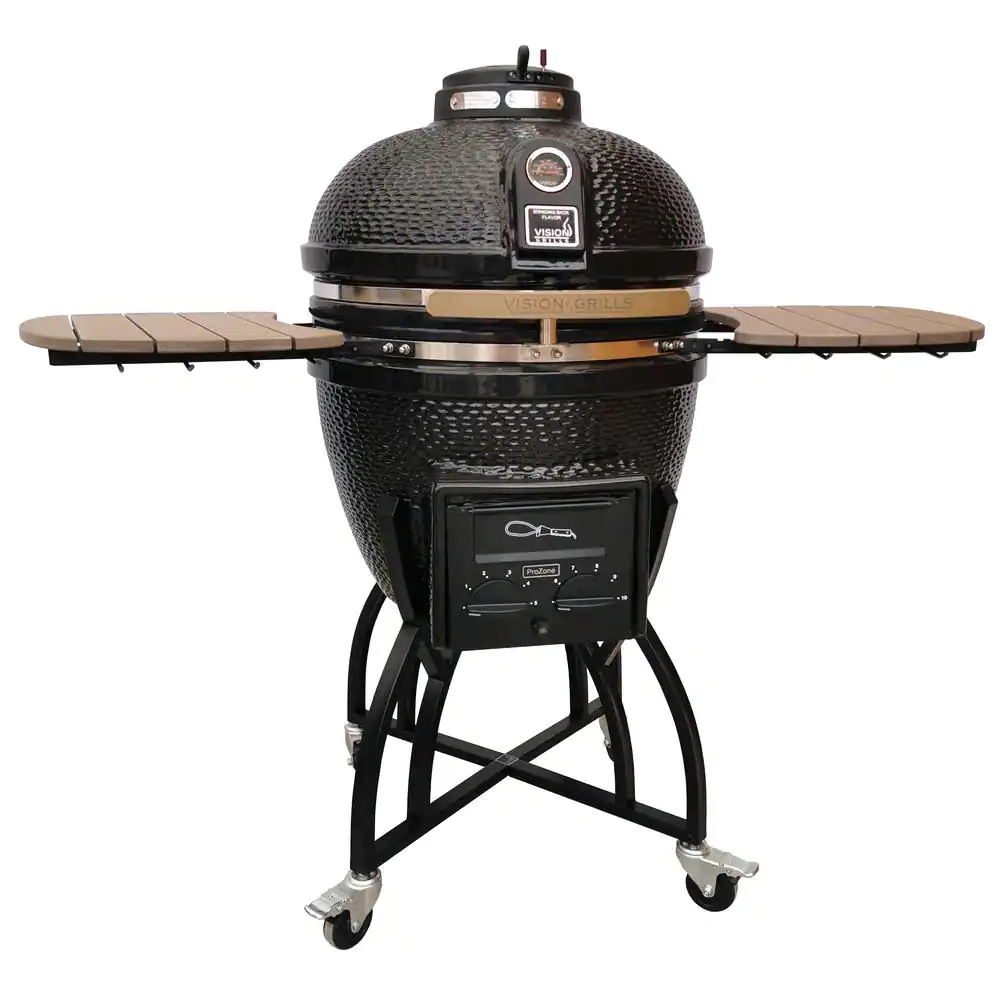
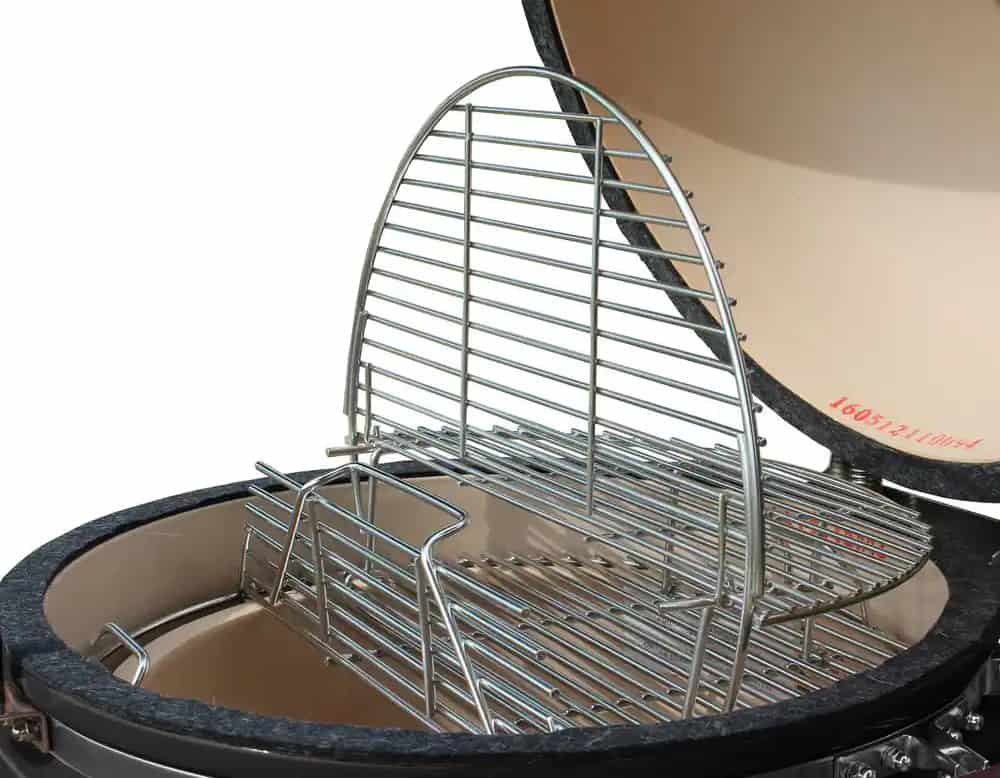
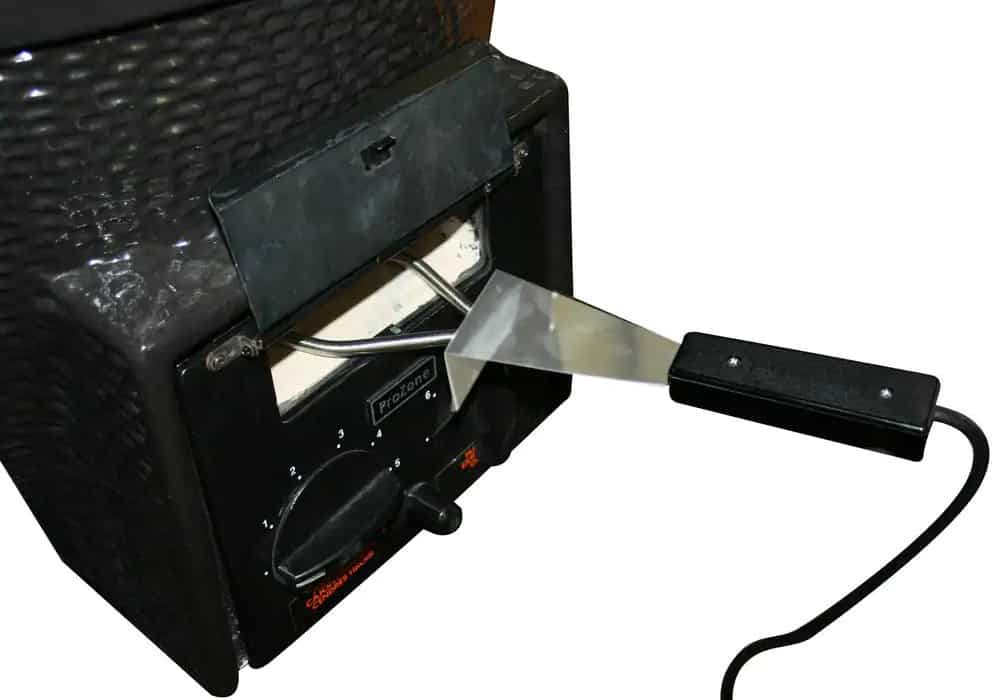
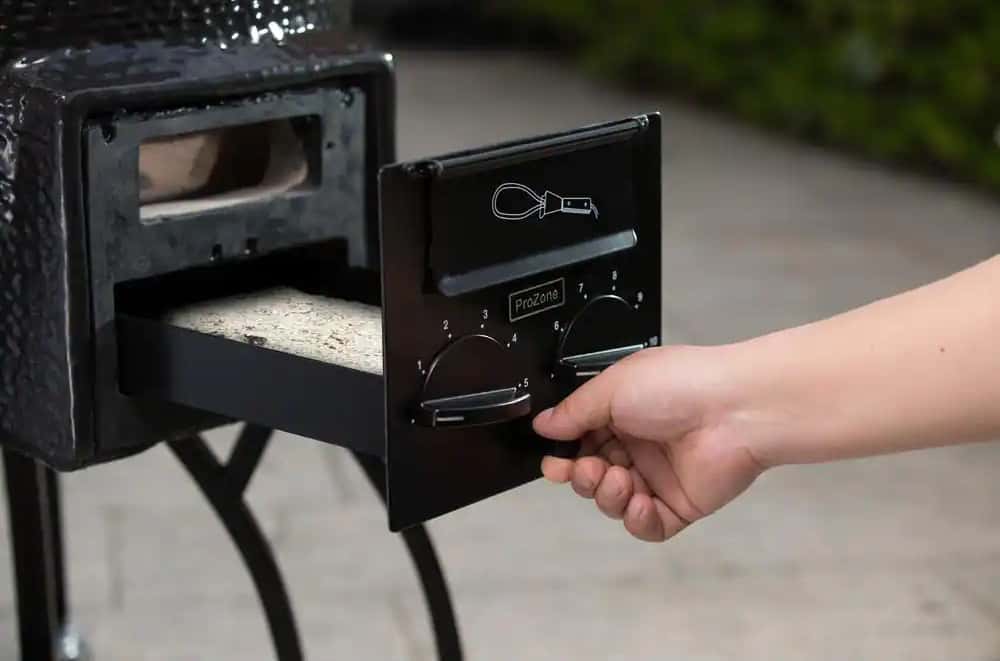
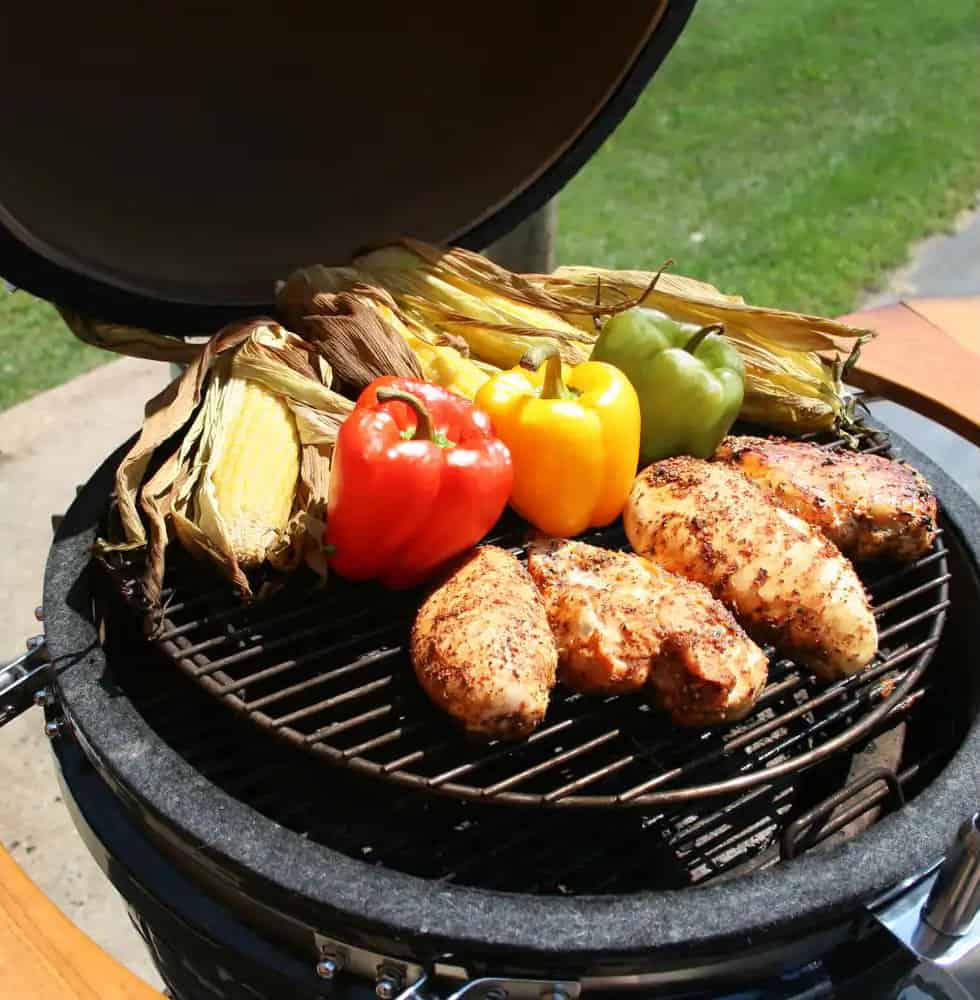










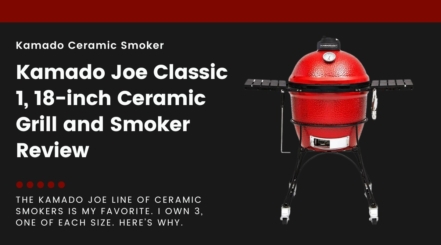
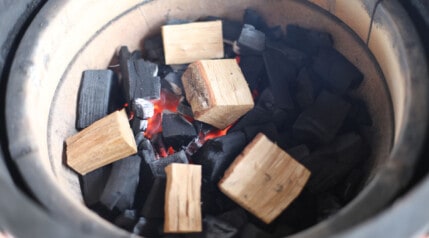
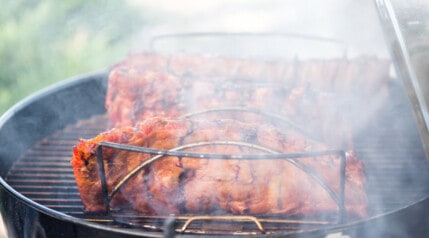
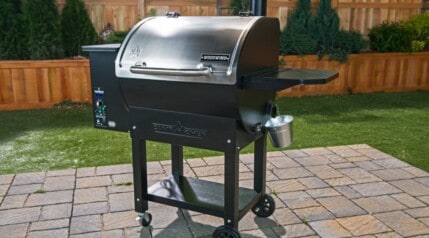
Mark, my wife and I are considering purchasing our first kamado. We’ve narrowed down our search to two basic models, the Primo “Large” and the Monolith “Classic”. My wife really prefers the Monolith. She says it just looks better, and it also comes with many accessories. Not sure if we need all them. Our question is this, can you get the Monolith in a different color?
Thanks for your advice.
Liz and Wayne
Hi Wayne,
Buying a kamado? Good choice! You’re sure to have a lot of fun and some great food from a Kamado, it’s the cooker I use the most from my selection.
It’s my understanding that they only come black, it’s the only color I’ve ever seen. You could shoot a quick message to Monolith at: monolithgrills.com/contact-us/
EDIT: As Martin quite rightly pointed out below, and is stated in my article above, all 3 size of Monolith grills are in fact available in black or red.
Mark.
Hey Liz and Wayne,
in Europe you can get it in red edition, I think that’s my choice!
Greetings Martin (Austria)
Quite right. Perhaps I should read my own articles before replying to questions, haha. I state above: “All three units are available in either red or black, and come complete with many nice accessories…“. I’ll have a word with myself.
Any thoughts about the Blaze Kamado? I am torn between the Blaze and a Big Joe. The unit will be part of an outdoor, covered kitchen. I like to smoke full packer briskets and pork butt simultaneously. I also like to sear steaks and finish them at a lower temp. Ideas? Comments welcome…
Hi Justin,
I have to be completely honest with you, I’ve never actually seen one in the flesh, and I never see them pop up in conversation online. I’m in multiple large Facebook groups dedicated to BBQ, and only once heard of them and took a look.
They do look good. Solid construction, lifetime guarantee (important IMO), have the nice feature that they do not need a firebox (sometimes fracture for ceramic owners), or any seals (that sometimes need replacing on ceramics.) Also, very easy to clean as you can take a hose to if you like, which you cannot with a ceramic.
But really, I’ve no idea what they cook like, what the airflow and temp control is like etc. I’ve just not had experience of them or seen anybody talk about them.
The blaze sits somewhere between a Kamado Joe classic and Big Joe size wise I see, but does not have a grill expander available I believe? I think that’s a sad omission as you really can’t load it up like you can some other models.
I personally have a Kamado Joe classic and can do a brisket and pork butt on that with the grill expander, BUT, it’s a squeeze and I really do regret not getting the Big Joe for the extra capacity. Although a lot of time I do not need something that big, on the occasions I do, it would have been nice to have the option. I often have to fire up a second grill because I went for a classic. But I also kind of enjoy using multiple bits of equipment at the same time, so not all bad. I like to sometimes cook large amounts, portion it off, vac seal it and reheat sous vide you see, it gets the maximum out of the fuel I use and the time put into it. OK, I’m waffling, haha.
The Blaze Kamado — yes, not sure what to say to be honest. I wouldn’t want to discourage you from considering it, it does look good, looks solid, has a few nice accessories. I certainly wouldn’t knock back the offer of having one. But if it was my money, I would likely buy a Big Joe — I’m an incredibly happy owner, love the community around the product, and the companies good reputation and obvious passion for always moving forward with new innovations.
Mark.
Loved this review of various cookers but notably absent was the Vision Grills line of kamados. Looked at one (Pro S?) at Home Depot, and it appeared to be solidly built with some interesting features & options, and not outrageously expensive. Have you seen one? And/or your thoughts?
Hi Rudy,
Thank you for your comment and suggestion 🙂
Yes, I’ve heard of Vision grills, but I’ve not seen one or heard / read many reports from people saying how good, bad, well-built and durable, or otherwise they are just yet. I’m aware that a few different companies and stores buy them up rather cheap from Alibaba, re-badge them and sell them under different names. You can see them for sale here at quite the low price indeed (though shipping would of course be crazy expensive): Alibaba — Vision grills
Thing is with this list, it’s of Kamados proven to be the most popular, highly effective, long-lasting, well-made, and well-supported. There are bound to be many not on the list as it’s not exhaustive and new Kamado brands are appearing all the time, so the list may change over time as I revisit it and see new models over the months and years. Vision grills may well make it onto the list in the future, but I wouldn’t include them yet until a consensus is formed by owners on how good / bad, how well-supported and how long-lasting they are.
Thanks,
Mark.
Did you try
Char-Griller Akorn Kamado Charcoal Kooker
Wanted to know if this Kamado is worth the purchase if on a low budget
Hi Willie,
I’m afraid I’ve neither used one, nor looked into them too much. I’ve seen them mentioned a few times around the web, but I don’t know of the consensus as to their quality, sorry.
Used one for about 6-years. Very good. Keeps temps at 225 °F for over 18 hours. Quality gasket. No air leaks. Cast grate, locking wheels. Side tables. I love the removable ash catcher. Definitely worth the money.
I’m considering a Kamado Joe, but am used to a gas grill with quite a bit of space. I’ll be using it to feed a family of 4 a couple of times a week and entertaining once a month or so for groups of ~10-15. The Big Joe is out of my budget. Think I could get away with using the extra rack on the Classic? Does the difference in height affect cook time, etc.?
Hi Nate,
The Kamado Joe classic is easily enough for the regular feeding of 4. We’re a family of 4 ourselves (me, my wife and 2 children) and it’s my go-to grill that I use about 3 days a week.
However, for feeding 15 people? It depends on what your plans are and what you intend to cook and serve for such a number of people.
With a grill expander, you can easily smoke low n slow 2x pork butts, or a brisket and pork butt at the same time. Or you can fit on a couple of racks of St Louis style ribs laying flat, more if you buy a rib rack that holds them vertically instead of laying them down.
You can easily do a big roast for 15 people, such a huge prime rib, or 2x legs of lamb, or 2x pork loins etc. Or you can load up a huge amount of chicken pieces (quarters, legs, wings etc.) all of which can feed 15 people with ease.
And the thing with doing butts, briskets, big roasts etc. After they are cooked, wrap them in foil, then in a towel, place them in a warmed drinks cooler, and they will stay hot for hours, freeing up the Kamado Joe to then cook sides or other things ready to be served at the same time as the main star of the show.
Does the difference in height of the grill expander affect cook time? Partially, yes, but it depends on what you are cooking, and it’s minimal.
What I mean is, after ‘heat soaking’ a ceramic kamado so the whole unit is up to a stable temp, the thick ceramic radiates heat quite evenly and the temperature gradient across different heights is quite minimal. You will read on forums people saying “my dome temp is 30 degrees hotter than grate temp”, but seriously, I just don’t ever see this at all when cooking low n slow (temps between 225 to 250f), they just haven’t given the unit time to heat up and stabilize properly at which point the difference is negligible to non-existent.
However, there is ‘some’ difference between grate and dome temp when roasting at higher temps of 350f because the lower rack is just so much closer to the heat source which is burning hotter compared to cooking low n slow. So when using the extender rack, if cooking low n slow, to me, it makes no difference. But if roasting at higher temps, I do swap things around between levels during the cook, to make sure things cook evenly.
Anyway, back to feeding 15 people: Where you will struggle is if you are direct heat grilling for a crowd. Things like steak, burgers etc. you would have to ‘feed people in shifts’.
When direct heat grilling, I like to have a ‘safe zone’ with a heat deflector and higher setting of a half moon grate, so I can move foods between the high direct heat, and then away from it if needed. Therefore, I effectively cut the kamado grill cooking area in half. This enables me to safely cook 3 or 4 steaks at a time MAX, or perhaps 5 or 6 burgers. This will be less than you are used to on a large gas grill I’m sure.
So in short (too late for that?) if smoking (or roasting) large hunks of meat low n slow for 15 people, no problem. When done, keep it warm, then cook sides.
If wanting to ‘direct heat grill’ for 15 people, you would feed them in shifts, doing 3 to 5 at a time.
Personally, I usually use a Weber kettle and my Kamado Joe together, big meats to feed a crowd on the KJ, so we all eat at the same time, and then the Weber kettle to serve stuff like burgers, sausages etc. And at this time use the KJ too if necessary, to have 2 units and their combined capacity for high heat grilling while the bigger meats are resting.
To give an idea of what you can get on the Kamado Joe classic with the grill expander, I’ve attached a few photos of my cooks below.
Hope this helps!
2x racks of beef ribs that were 2.5 kg each:

2x racks of baby backs and 12 to 14 individual lamb ribs:

Approx 40 wings and 25 moink balls:

2 racks of MEATY spare ribs (could easily fit more):

2x racks of beef ribs, and 3x racks of VERY MEATY pork ribs:

A ton of cheeses, garlic etc. When I did some cold smoking on the KJ:

So as you can see, you can get a lot on there.
REALLY helpful stuff. Thanks, Mark!
No worries, happy to help!
Hi Mark,
I definitely am going to buy a Kamado Grill! However, I can’t decide between a ceramic one or the broil king keg.
I feel the ceramic ones are more iconic, but I am more the practical type.
Basically when I read about the Broil King Keg, I think “it’s lighter, more efficient, doesn’t keep smells, and doesn’t break, so I don’t get how ceramic kamados are going to survive”.
My question is: Am I missing something? Are the ceramic ones better for slow cooking, or easier to regulate the temperature? Or something like that? If not, why isn’t everyone buying the broil king keg? There must be some advantage on having a ceramic one other than the fact that they were the first ones…
Thank you very much,
Sebastian
Hi Sebastian,
To be perfectly honest, I’ve not yet used a ‘metal kamado’ so cannot truly compare their results when cooking. But I have seen and heard of many people using the Weber Summit charcoal grill, which somewhat resembles a kamado and is made of metal, and they absolutely love it and cannot sing its praises enough.
Anyway, I think the advantage of the ceramic versions over metal, is the materials and parts on the ceramics are a higher quality. You often get ‘lifetime warranty’ on the ceramic versions, probably to 10 years on the metal ones. They will corrode in time.
Also, because ceramics have a higher thermal mass, there’s simply more material, once up to temp, they will be easier to keep there. So once you are used to using a kamado style grill, you should find you will keep consistent temps on a ceramic cooker more readily, and they will be less impervious to inclement weather.
But really, I’ve never heard anybody complain about their kamado style cooker, whether metal or ceramic. Even the cheaper ones like Akorn etc. people say they get great food from, just dialing in temps is a little harder, and they bite the dust within 2 or 3 years of use.
Fantastic piece of content and advice Mark.
I’m completely into my BBQ’ing now at least doing 3-4 grills a week here in the UK on my trustee Weber Genesis. However, I’m wanting to get another grill for longer cooks and to learn more about the craft of BBQ. Narrowed down to 3 options…
1) Weber Summit Charcoal — loads going for it and my existing extras will work on it — however it’s £1300
2) Kamado Joe II — love what this is about and the look but concerned again by cost and the possibly crack….
So with 1 and 2 being similarly priced and not knowing how much I’ll use I then thought what about
3) Kamado Joe Jr — it’s like £420, and it would give me the taste of Kamado and if only using for longer cooks I could compromise on grill space….
So ultimately is the Joe Jr any good?? I’ve subsequently read how it’s hard to keep a low heat for a good number of hours and appreciate I might want to build something to house it at a decent height so a little one doesn’t knock into it…
Any help would be great — cheers
Hi Chris,
We’re in the same country…where are you based?
The KJ junior is very good, but you have to bear in mind it is very small! Personally, I see it as either a collectors item for people who simply MUST have all 3 sizes due to an addiction (LOL), or a good ‘second grill’ to use at home if you already had a larger one to do long low n slow smoking sessions on, but you also wanted something smaller to cook on when you want a quick mid-week meal, or for smaller direct heat grilling tasks. Also, maybe as one to take camping / tailgating.
But yes, as a ‘main charcoal fueled smoker’ it’s just too small for me. If you were to have guests over, you wouldn’t be able to get enough on there to feed everybody, and you lose a lot of flexibility.
Between the Weber Summit and the KJ classic, either would be absolutely fantastic to own, so it’s really down to personal preference. I’m sure you would be ecstatic to own either…I certainly would. However, I’d still go for the ceramic, as due to the higher thermal mass, it will soak up heat and keep a steady temp better IMO, important over winter months or when very windy.
Have you perhaps considered the original Kamado Joe Classic version 1? There are still a good number kicking about if you google for it, and you can get them for £800 / £900, even some packages with a few extras come in at under £1k.
KJ are actually releasing a version 3 early this year, with some more advancements and tweaks to the design. They are having a taller version with more cooking levels, adding a ‘hyperbolic insert’ which causes little eddies in the rising heat to make heat distribution even more even throughout the cooking chamber, also a new cart design. But yes, these will be even more expensive than the KJ version II. I think I’m going to upgrade to the Big Joe version III this year, always wanted a larger one, and running a website on outdoor cooking I feel I have some sort of duty to keep my equipment current. But I digress…
If expense is a concern, I would absolutely consider the original KJ version 1 classic. £900 or so, and still an absolutely amazing outdoor cooker. At that price, you can add a controller from FlameBoss or similar for a couple of hundred quid more, and be able to cook ‘hands off’: Set it to a temp, and it will stick there by the controller. You can go to sleep while it cooks overnight, or head out of the house while still monitoring the cook from your phone, even turning the temp down — or completely off — remotely from wherever you are, while knowing it will absolutely stick to whatever temp you set it to. Amazing when you don’t want to sit and babysit the cooker for a 16-hour brisket or pork butt!
Yes, the version 1 isn’t quite as good-looking as the V2 (or the upcoming V3) with their better hinge, nicer looking smoke cap etc. So yes it might be missing some newer features, but seriously the food that comes off them will be EXACTLY the same. I still have the V1, and when friends come round and they see all my outdoor cooking equipment (3x kettles, a KJ, a WFO, a WSM, couple of travel BBQs…) it’s ALWAYS the KJ they coo over and love.
You mentioned cracking: When I first got my KJ, the fire bowl cracked in 5 weeks. Only a smallish crack. I got onto support, they sent me a new one. I’m still using the cracked one though 2-years later. It never got worse, and I’ve used the KJ 2 or more times a week, including high temp 700f pizzas and burnouts, during summer and winter.
If you do get a crack in the fire bowl, you will simply be sent a new fire bowl. And they actually send out the V2 fire bowls these days, so it will not happen a 2nd time if it does even happen a first time.
But if you’re referring to ‘cracking’ of the actual cooker itself, the main ceramics, then except for a unit being dropped or vandalized, I have yet to hear of it cracking a single time, ever. I’m in all the big BBQ groups on Facebook, and never heard of it happening, so this shouldn’t be a worry.
So yes, summary: If money’s a concern, I’d go for a KJ classic V1, if not a concern, I’d probably wait for the KJ classic V3 to come out. This is my preference. But if you did go for the Weber Summit charcoal, they are an amazing bit of kit and I’d be a bit jealous as I want one, haha (though personally I’d buy a ceramic first. That’s just my preference. There’s not a lot in it.) However, I would not buy a Joe Junior unless I already owned a large one, they’re just too small for my liking. Not enough capacity and flexibility, would be frustrating if you ever do want to cook 6KG briskets, or tons of racks of ribs when you have friends and family over.
Let me know what you eventually do, I’m interested 🙂
Cheers,
Mark.
Thanks, Mark for the complete response.
I’m in Hertfordshire and not that far away from a Kamado Joe stockists, so I decided to pop-in and see what you mean about the grilling size on the Junior — whilst it looks lovely I think over time I’d kick myself for not having more space to work with. So that is out [for now!].
I had a look at the new Weber Master Touch Premium which as a smoking plate in it — seems a good grill and again at the cheaper end being about £360 – just waiting for some longer cooking reviews [I notice however it’s a Europe only BBQ] — fortunately a friend purchased, so he’s going to keep me informed.
Heard the Classic 3 is due out later this month / Spring time — not seen many differences between that and the II. Will keep searching the web for information — it’s not on their website yet.
So at the moment it’s a waiting game. Will keep you posted and expecting to purchase later this month or if a great deal comes along!!
One question — is ceramic ok cooking in cooler outdoor temps [I BBQ all year round] so just thinking of the cooler spell last week and how they fair?
Thanks again Mark and good to meet another UK BBQ’er
Chris
Hi Chris,
I’m in Beds myself, quiet little place called Meppershall. Maybe moved here 20 years too soon though as it’s the sort of place you retire to for golf and fishing, and not a lot else goes on. Oh well, I already play golf…fishing next I guess?!
Ceramic cooking is fine all year round. Take a little time to let it come up to temp — as you should do anyway for every cook — and the ceramics will hold up well. Also, they are so thick and therefore provide such good insulation, it’s easy to hit temps and stay there regardless of the temps outside. I cook all year round in rain, sleet, snow, ice, in the coldest temps mother nature has to throw at us. No problem at all. I also see many people all over the Facebook BBQ groups cooking in stupidly low temps compared to what we get here. So yes, definitely no issue.
Hi Mark, Wow — small world I know Meppershall and actually live in Hitchin.
Good to know on ceramic cooking — and since our last couple of comments I decided to patiently wait and see what the KJ Classic 3 is like when it finally arrives here later this month before actioning my purchase! Have decided to hold fire on the Weber Summit — I saw one in the flesh and was like it’s nice but rather imposing! So I’m waiting with bated breath to see this new KJ in the flesh — it looks nice from the pics online!
Are you purchasing one this year or sticking with your current line up!
Nice site BTW!
Chris
Ah, Hitchin, nice. We nearly moved there as I prefer a place with ‘a bit more energy’ but we got so much more for our money house-wise being out here, and it’s closer to all my wife’s friends. I’d prefer to be out Hitchin way myself though personally.
I’m going to get a KJ MKIII for sure. With a classic MK I, I would just feel ‘too out of date,’ which wouldn’t be best while running a website such as this. So the choice is: Big Joe or Classic…and also ‘standard type’ or the new deeper one that holds even more food? Will be interesting to see the price points, then I’ll decide.
I’ll possibly do what I did when I bought the MKI: Make sure I buy it while I’m not in shouting distance of the wife, photograph and message her the receipt, then turn my phone off, lol.
“Nice site BTW!” — Thanks, 🙂 It’s coming along nicely. Nearly at the stage now where I can start to concentrate on cooking and writing up recipes, which was mostly the original goal but has been strangely neglected! Just a few more weeks while I add some ‘how to / step-by-step’ guides for using different types of grills, then I get to actually showing off some cooking. At long last!
So I’m still awaiting to see a video or something about the KJC III. Nothing is out yet, but as the weather in the UK is teasing us not sure if I can hold on. I’m trying to justify if a £450 saving should mean I just go and get the KJC II — it’s got some great reviews! Considering I was going to get the Junior. It’s a massive step-up.
Then I’ve just seen some great offers on Monolith and Primo … Hmmmm do I go there or stick with KJ? (That’s where my head is) Too many decisions now going through my head! But I honestly think it’s do I pocket £450 and get the II. or does this new heat circulation tool make a massive difference? … Hmmmm.
Will keep you posted!
Lol…love it.
I’m like this with so many things: Phones, watches, new laptop, camera, kitchen knives, mountain bike…anything you drop a non-negligible amount of money on becomes a nightmare of research and trying to make that final decision.
Once you get into ‘middle ground territory or above quality wise’ there is so much choice, and you spend so much time looking at options, you fall in love with loads of them and it makes it hard to choose, when the reality is almost any on your shortlist will be more than good enough. Analysis paralysis!
Yes, do keep me informed, I’m super intrigued to see what you end up with 🙂
So, Mark.
Last weekend I became the proud owner of a Kamado Joe!! A good event happened locally, and I decided to take the plunge! Started off by buying the latest greatest III, but after a “chat” with my wife I decided to switch to the II due to the cost difference being about £400. So I now have a KJ Classic II, and am super happy! Brought it home on Tuesday night, and had a friend help me get it into position … Wow, they are heavy to move.
So now to this weekend and off to pick up some ribs and brisket (it helps that a best mate is a butcher!) and it’s time to start learning a new art form of BBQ!!
On the decision with changing from the III to the II, I was actually ok with this … the cart upgrade I thought would have been nice but seeing the sturdiness of the II cart I just see it as a cosmetic upgrade. The smoking insert … Hmm, this was a tough one but at the back of my head I was concerned that my wife and daughter will find the smoke flavor too much, so again was OK … I am interested to hear more about the III, but at the end of the day, I’ve a new toy and have never tried any other Kamado so know that this is going to be more than capable of doing the things I want to try out.
A little disappointed I can’t get to London today to see the Kamado Joe event with Eric and the guys, but will just have to consume videos and content to learn more tips.
Keep the content coming and happy BBQing this weekend … now for me to read up on dual thermometers!
Hi Chris,
Love it! Congrats on the new purchase. I’m a bit jealous, what with my lowly MK1 version!
I think you made a good decision. £400 is a lot of money, and the ‘improvements’ won’t affect the cooking much, if at all. Leaves you some room to buy accessories, or a ton of fuel and meat 😉 I look forward to seeing what you cook on it.
I heard about the KJ event. I would have loved to have gone, but family commitments got in the way. A shame, as I spent 2-years living in Camden and love the place, would have been good to go back to the old stomping ground for a day.
This weekend just gone I played with a Kadai fire bowl for the first time, did a forerib of beef hanging over birch fire. Loads of fun. Will be making a post on it early next week…and finally starting a Facebook page and group to post cooks, chat with people etc. So watch this space 🙂
Hi Mark,
Great info here! Wondering if you have any experience with or thoughts about the Grilla brand… specifically the Kong. Looks like a great product, but we would love to hear more thoughts about it and comparisons.
Thanks!
Hi Charlie,
I’ve not heard much about the Kong I’m afraid. I’ve seen it pop up, but never really seen it discussed or reviewed, so it’s hard for me to form an opinion.
On a related note: There seems to have been many people entering the kamado market in recent years. If you Google ‘Alibaba kamado grill’ and click through to Alibaba to see how many Chinese factories are now making them and willing to tweak designs to your liking, add your badge etc. It’s quite surprising. It’s also hard to keep up with all the new brands that are entering the market.
Hi there, I was hoping to get some advice between 2 choices for my first Kamado style grill! I’m a novice when it comes to charcoal (have been a gas BBQ’er for my sins) and now I’m picking between the Kamado Joe Classic 3 (the larger sized one) and the Weber Summit Charcoal — which would you recommend and why? Thanks, in advance.
Mark
Hi Mark,
It’s a bit like BMW or Audi: Both extremely well-made, both very desirable, both do what they’re supposed to do incredibly well, most would be happy to own either…and so it’s a personal choice.
People with a summit say it holds temps well, is fuel efficient, cooks food like a ceramic and like a dream. The summit isn’t as thick as a ceramic, but it’s double walled with an air gap, so is well insulated and holds heat well. The summit doesn’t come with the insane weight of some ceramics, or fear of the ceramic cracking — particularly the deflector plates (not really a fear, just use your ceramic correctly and don’t drop it!) so is lighter and ‘partially mobile.’
Generally speaking, there are more accessories for the Kamado Joe (DoeJoe for pizzas, or a standard pizza stone, rotisserie, many different grates, soap stone, cast iron, etc.), and with their recent redesign in the V3s, there is (or can be) far more cooking surface area, as you can now cook on 3 levels, which means you can cook huge amounts if you’re having a big party and have added enough grill grates.
I have read people complaining about the propane ignition system in the Summit, saying it lights too many coals at the start of a cook, or an indeterminate number, so starting it up and getting to temp can be a bit less consistent than with a ceramic — but then you don’t have to use it, and can use a Looftlighter or lighter cube the same way you would a ceramic.
But honestly, I know people who have cooked on both a KJ and a summit, and they love both, say the food is the same off both, and would be happy with either. I would be happy with either.
So the only advice I can give is: Compare them like for like, thinking of what accessories you get with them, what accessories are available and which ones you might like in the future, how much cooking surface area you might need, and then factor in the looks / appearance for which one you desire the most…and then decide for yourself. It’s a personal thing and some will prefer one over the other. They are both incredible grills / smokers, and you will surely be happy with either, and they are both comparably capable cookers.
If you want my opinion though, I just bought my original V1 KJ classic a big brother, so am now the owner of a Big Joe V3. So you know which I would go if you want my opinion 😉
Me and my Kamado Joes:
Thanks so much Mark, I’m going to go and find somewhere semi-local where I can see and (play with!) both to help me make a decision. I’m sure you are right and you can’t go wrong, I was slightly leaning towards the summit as the ability to drop heat quicker if I get it wrong (or become distracted by the kids) is appealing, rather than being stuck at the wrong temp for an hour or so. But I do like the look of the Joe more!
Sorry, I had problems with my browser, it didn’t load the comments correctly for a couple of hours. Well you already have my question. Thanks!
Hi Toni,
That was probably my fault and not your browser, sorry for the hassle and confusion. I replied to your first question a few minutes ago.
Over the last week I rebuilt this site, making all information more accessible via the menus and category pages, and also more than halved the loading speed, to make the user experience better. It was getting incredibly, painfully slow on the old software so really needed doing. In that time, comments were ignored somewhat, and the site flitted between versions as things broke and had to be restored. My apologies.
I’m considering buying a Kamado for Christmas, but I really can’t decide between a Kamado Joe and a Monolith.
I live in Europe and I’ve seen a Monolith in a shop but never a Kamado Joe.
What I don’t really like about Monolith is the material between the lid and the main body. Is it cloth? I know that Kamado Joe has fiber glass.
Setting this apart, Can you tell me what would you do? Pay a little more and wait for a Kamado Joe Classic 2 or go get the cheaper Monolith Classic with my car and have it the same day? Is it worth it to wait?
Thanks
Hi Toni,
The material between the lid and the main body is a ‘gasket.’ It’s a felt like ribbon of material that serves to seal the body when the lid is closed, ensuring it’s airtight, and that no heat and smoke can escape, helping with temperature control and fuel efficiency.
I have a Kamado Joe Classic version 1, it uses the same felt. I’ve had this for perhaps 3 years or so now and used it on average 3 times a week. In that time I have had to replace the gasket twice. This is normal and to be expected, as it is a somewhat ‘consumable part’. How long it lasts depends on how often you use the kamado, how many of those cooks are very high heat (baking pizza, for example), and how often you get fats and sauces on it during use.
I now have a Kamado Big Joe version 3, and it has the fiberglass gasket you speak of. I much prefer it, it looks better, seems to seal better, and although I’ve only had it a couple of months now, I’m reasonably sure if this gasket will last a hell of a lot longer than the felt one too.
What would I do? Monolith or Kamado Joe? I would get a Kamado Joe version 3. I have 2 KJs, a version 1 classic, and a Big Joe version 3. On version 3 I love the hardware, the build quality, I like the bright red color, I love the food that comes of it. I love the newer fiber-glass gasket, I like the ‘airlift hinge’ that makes the lid weightless, and I love the latch on the front that seals the lid tight in combo with the new seal, plus I love the look of the new cart. And a bonus is the limited lifetime warranty for the original owner on the ceramics, they really stand behind their product. It’s just a cool bit of kit, with some great advances made since version 1.
For me, the Monoliths are more in line with Kamado Joe version 1, not a version 3, which is a class above.
OK, so the question is: What should YOU do? If you are considering a Monolith vs a Kamado Joe Version 3, I think the biggest question is ‘how much are you willing to spend?
The Kamado Joe V3 has design features and bells and whistles that the Monolith does not have (the things I mention above). These are ‘good to have,’ make the thing feel special and efficient at its job. However, it costs considerably more than the Monolith, so with Monolith you could save some money, it just will not look, feel or be as advanced design and hardware-wise.
However, I am pretty darn sure if you had a Monolith and a Kamado Joe 3 side by side, and cooked the same cut of meat on each, using the same fuel and flavor wood, you would get incredibly close results from each, probably indiscernible.
So, it really is up to you and a personal decision, perhaps driven by the desire to be the most up to date on the tech and hardware used or not, plus budget.
Hi Mark,
We have been shopping for a Kamado Grill for our new house and found this post; This article was a tremendous help.
We are thrilled with this site, and can’t wait to try out some of the recipes here.
Cheers,
Paul and Susie
Divergent-Technologies.com
Thanks, Paul. I’m glad it helped 🙂
Thank you so much all your idea mark I am looking to buy Kamado Joe 2 Thanks
I’m pretty confident you won’t regret it 🙂
Hi Mark,
Sat here in Belgium in confinement, and I’m mulling over the purchase of a kamado. I’m down to a choice of two — KJ Classic 1, or The Bastard. I know all the positives of the KJ, but not much about The Bastard as a make. Do you have any experience of them?
Thanks,
Paul.
Hi Paul,
To be fair, I know close to nothing about the bastard, I’m afraid. I see it mentioned here and there (and chuckle at the name, haha) but I’ve never seen or read much of substance about it, so I’m a bit ignorant on it.
So, I’m sorry, but I can’t help with this one. (Buy a KJ! Lol.)
Mark,
I think it’s going to be a KJ classic in the end. I’m having difficulties negotiating with myself to drop quite a bit of cash on something that I know nothing about. The KJ Classic is only a little more expensive, but it’s tried and tested so think that’s the way I’ll go. I get my tax rebate at the end of the month, so early May I’ll be grilling!
Really informative article, thanks.
I’ve been toying with the idea of investing in a Kamado Joe Classic 1 but noticed Monolith released a ‘Basic’ classic grill last year which is essentially a stripped down version of the Pro 1.0. As you might expect, it’s supplied with fewer accessories and doesn’t include the wood chip feeder which is a great feature but being £200 cheaper than the KJ Classic 1 it would appear it offers real ‘bang for buck’ at that price range. Only trouble is, they are few and far between online. Do you have any experience with the basic model?
Also, you have to wonder why the gaskets cannot be ‘upgraded’ to fiberglass on the kamados which are sold with the felt. Maybe I’m over simplifying?
Hi, Iain, I’ve no experience or even read much about the Monolith basic I’m afraid. I know of people in Facebook groups who have the standard Monolith, and it’s a good bit of kit, so hopefully that carries on down to the basic range too, but I’m unable to say I’m afraid, sorry.
Regarding the fiberglass gaskets: I asked about upgrading my Kamado Joe classic 1 to them, and the reason they aren’t backwards compatible is that the newer versions (like my Big Joe 3) have a latch on the front and the older models do not.
With the newer models, when you close the dome and latch it, it applies a strong constant pressure that squeezes the fiberglass together (and flat) creating an airtight seal. On the older models without a latch, the weight of the dome is not sufficient to cause enough pressure to flatten and seal the fiberglass properly (it’s much thicker than the felt strips), and so the seal wouldn’t be as effective, potentially leak and then not be as efficient or stable temperature wise.
It’s a shame, as I need to put new gaskets on my version 1 as we speak and will have to buy the felt strips. In fact, I’ve needed to do this for about 3 or 4 months now, I keep putting it off for no valid reason, need to get my ass in gear and get it done! Haha.